GTA Giving Guide 2022 Visionary Philanthropy
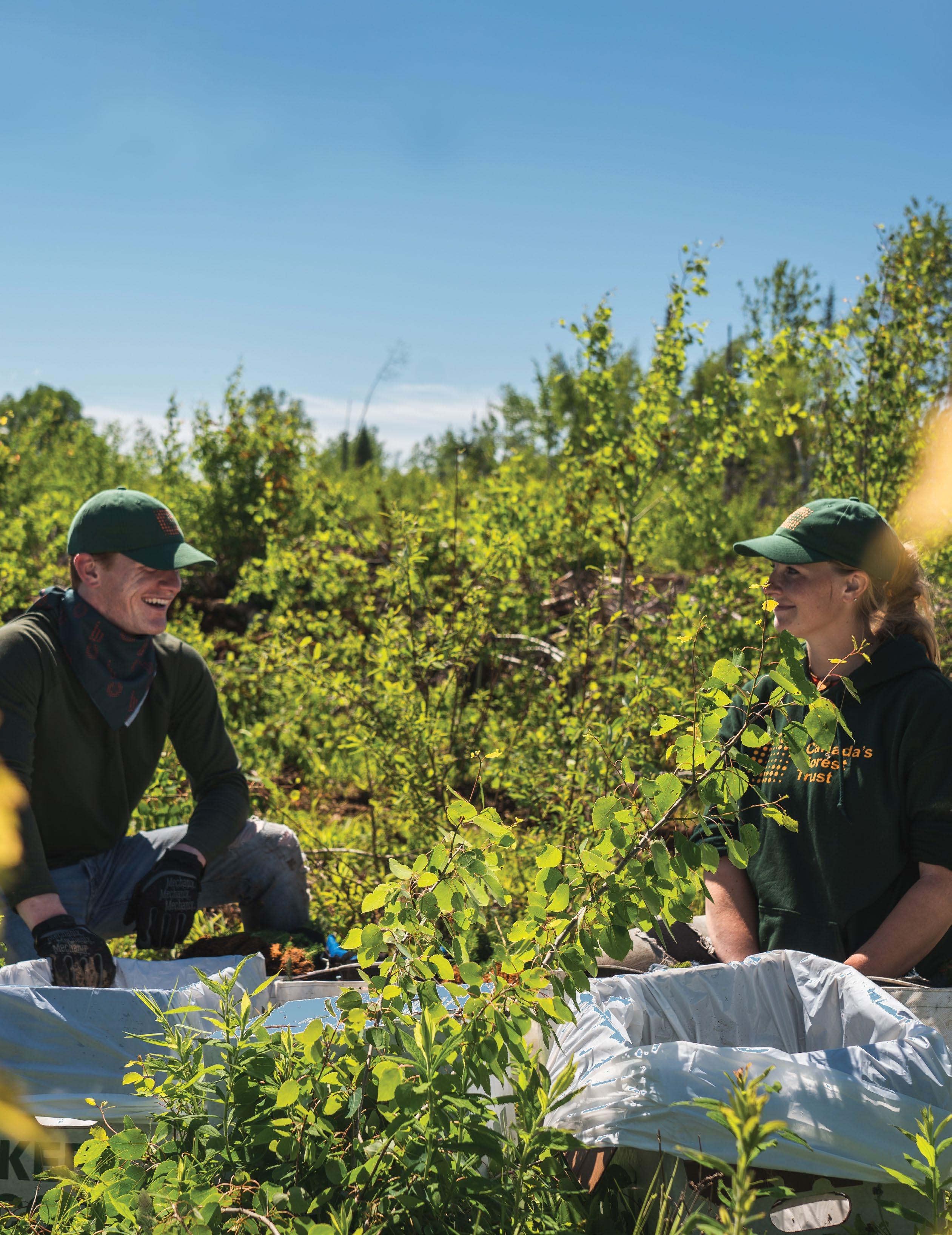
FOREST TRUST
CANADA
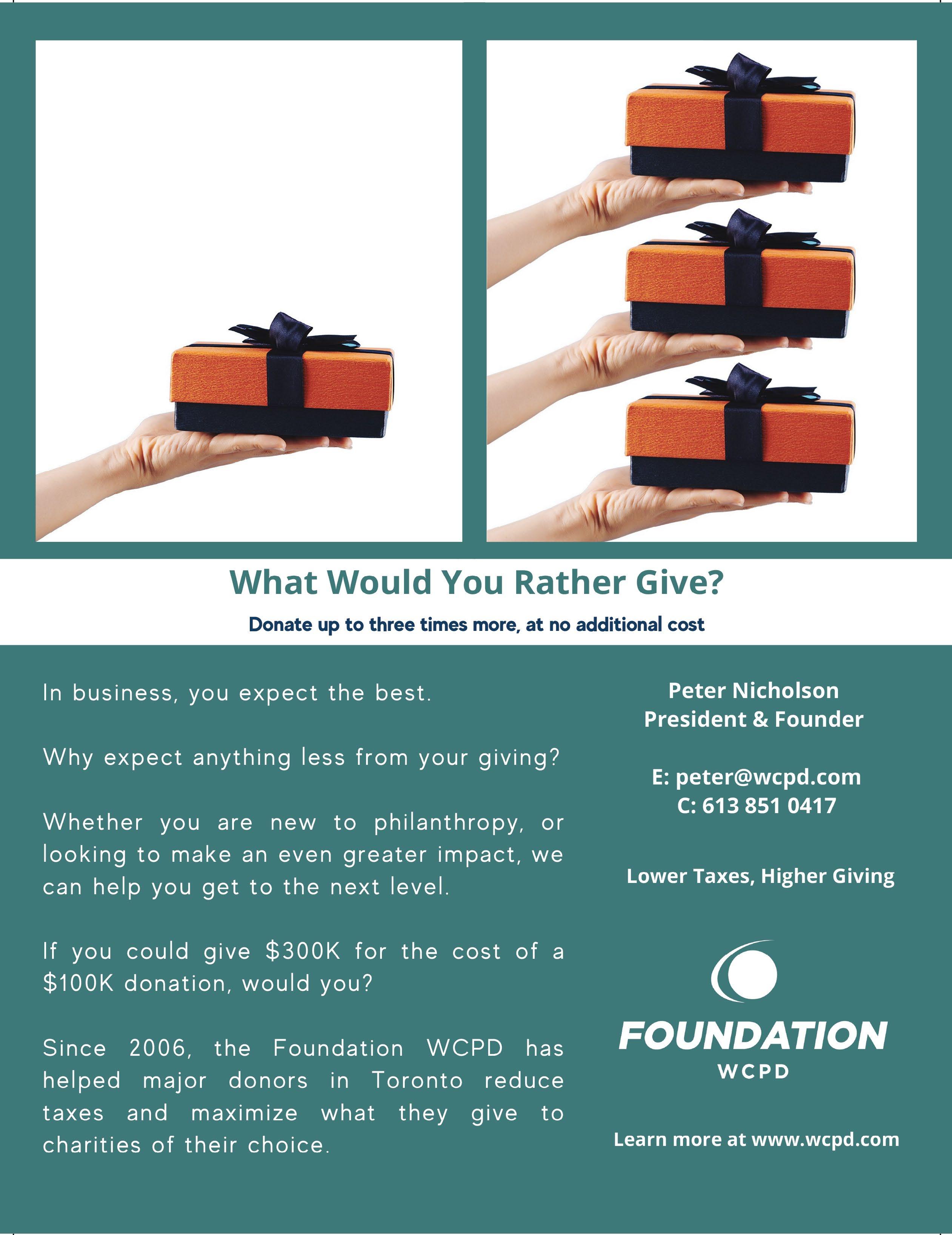
Supplement of www.foundationmag.ca
Twitter: @foundationmaga1
PRESIDENT / EDITOR-IN-CHIEF
Steve Lloyd - steve.lloyd@lloydmedia.ca
ACCOUNT EXECUTIVE
Laura Tyson - laura.tyson@lloydmedia.ca
DESIGN / PRODUCTION
Jennifer O’Neill - jennifer@dmn.ca
LLOYDMEDIA INC.
HEAD OFFICE/SUBSCRIPTIONS/PRODUCTION:
302-137 Main Street North Markham ON L3P 1Y2
Phone: 905.201.6600 Fax: 905.201.6601 Toll-free: 800.668.1838
EDITORIAL CONTACT:
Foundation Magazine is published bimonthly by Lloydmedia Inc. Foundation Magazine may be obtained through paid subscription. Rates: Canada 1 year (6 issues $48) 2 years (12 issues $70) U.S. 1 year (6 issues $60)
2 years (12 issues $100)
Foundation Magazine is an independentlyproduced publication not affiliated in any way with any association or organized group nor with any publication produced either in Canada or the United States. Unsolicited manuscripts are welcome. However unused manuscripts will not be returned unless accompanied by sufficient postage.
Occasionally Foundation Magazine provides its subscriber mailing list to other companies whose product or service may be of value to readers. If you do not want to receive information this way simply send your subscriber mailing label with this notice to:
Lloydmedia Inc. 302-137 Main Street North Markham ON L3P 1Y2 Canada.
POSTMASTER: Please send all address changes and return all undeliverable copies to: Lloydmedia Inc. 302-137 Main Street North Markham ON L3P 1Y2 Canada
Canada Post Canadian Publications Mail Sales Product Agreement No. 40050803
3
2022 GTA Giving Guide
foundationmag.ca
TABLE OF CONTENTS
FINANCIAL PLANNING 5 Five Burning Questions on Charity Flow-through Shares FOUNDATIONS 8 The Power of $100 Grass-root charity helping underprivileged students makes jump from Ottawa to Toronto, showing even small donations can change someone’s life 10 Smart Forests Take Root Canada Forest Trust, a national ESG company, launches practical solution for those looking to go net zero GIFT PLANNING 14 Giving Isn’t Equal MANAGEMENT 16 Five Must-Dos When Hiring a Major Gift Officer FINANCE 18 Understanding Fundraising’s Costs CHARITY MARKETING 20 Harvesting Growith: A Data-Driven Approach to National Expansion LEADERSHIP 22 Leading a Movement to Drive Change for Mental Health STEWARDSHIP 23 Four Types of People a Gift Officer Needs to Succeed RESEARCH 42 Make the Most of Your Donations this Year 2022 GTA GIVING GUIDE 24 Moorelands Kids 26 The Animal Guardian Society 28 Children Believe 30 Trinity Centres Foundation 32 Second Chance Animal Sanctuary 34 Durham Children’s Aid Foundation 36 Ontario Turtle Conservation Centre 38 Hamilton/Burlington SPCA 39 Ross Memorial Hospital Foundation 39 The Riverwood Conservancy 40 Canadian Hearing Services 40 PrimRose Donkey Sanctuary 41 Kensington Health Foundation 41 Niagara Health Foundation CHARITY PROFILES
ASSOCIATION PARTNER FOUNDING PARTNER



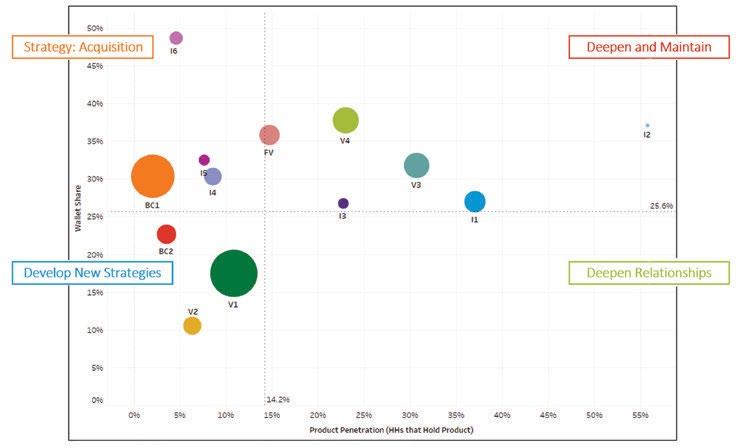












March 22 March 21 August‘20
1 2 3 4 5




Five Burning Questions on Charity Flow-through Shares
BY PETER NICHOLSON
If you’ve been a reader of the Ottawa Giving Guide over the years, odds are you have seen my annual column and heard a lot about charity flowthrough shares.
Since my firm Foundation WCPD (Wealth, Creation, Preservation & Donation) completed the first ever Canadian charity flow-through transaction in May 2006, I have spoken with thousands of major donors, foundation board members and professional fundraisers. It's fair to say, over these 16 years, I’ve heard it all.
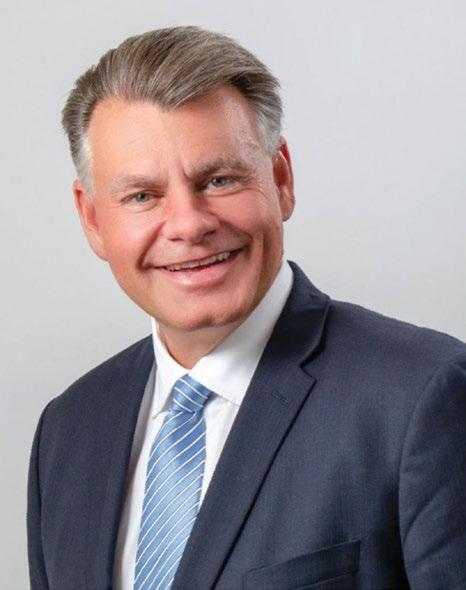
It's also fair to say we’ve come a long way since 2006.
The numbers speak for themselves. More than $300 million has been created for charities using charity flows with immediate liquidity, all across
FINANCIAL PLANNING
Peter Nicholson
5 foundationmag.ca 2022 GTA Giving Guide
LUBUSHKA
ISTOCK/
Canada, with no CRA issues. We have issued over 8,000 cheques on behalf of clients through the WCPD Foundation, and just last year, we receipted more than $48 million on donations, while disbursing $38 million to charities.
There is no doubt the structure is more popular and trusted than it ever has been before.
And yet, despite its popularity, it is often misunderstood.
“Is this real?”
“Does the government know about this?”
“It seems too good to be true.”
Over 16 years of meetings, and I still occasionally hear these comments and concerns. So for my column this year, I decided to get back to basics and answer the five most burning questions I often get asked by clients and professional fundraisers.
understand the mining business. They are willing to assume this stock market risk. However, in return, the flow-through liquidity provider requests a discount on the shares — generally around 30 percent. Their hope is the share price doesn’t dip below that discount by the end of four months.
But that’s not your problem. When you buy the shares, you immediately donate them to charity. In turn, the shares are then instantly sold to the pre-determined liquidity provider at a discount. In the process, the donor retains that 100 percent tax deduction. Finally, the charity receives the cash proceeds from that sale to the liquidity provider and issues a charitable tax receipt to the donor, triggering a second 100 percent tax deduction on the cash value of the donation.
This whole process happens almost instantly. It is seamless for both the donor and the charity.
On their own — without immediate liquidity — absolutely.
First introduced in 1954 (three years older than your RRSP), flows are a financial policy instrument used by junior mining companies, and facilitated by the government, to raise capital for natural resources and critical minerals through a tax deduction equal to the amount invested.
That’s a fancy way of saying, you will receive a 100 percent tax deduction on the amount you buy. But there is just one problem — traditionally, these investments end up being a homerun, or a strike out. These junior mining companies use the money you invested to drill — and hopefully find that next big discovery. But nine times out of 10, they fail. Meanwhile, investors must hold these shares for at least four months after purchase, and during that time, the stock could skyrocket, or plunge.
Our structure turns that home run or strike out into a double — every time. That’s why I often call it “the GIC of tax reduction”.
What makes our structure so special? The liquidity provider. Liquidity providers are institutional buyers of shares that
We all know it costs 50 cents to give a dollar, when you donate cash via a cheque. Or a better method is you donate public stock; for example. Stock that has doubled without paying a capital gain is 37 cent cost to donate a dollar, or 27 cent cost for stock that has increased 10 fold. With the charity flow method, due to the two tax policy deductibility, it can cost as little as a penny to give a dollar to as high as a 25-cent cost, motivating donors to give more.
So are charity-flow through shares risky? With an immediately liquidity provider — absolutely not. There is no stock market risk for the donor or charity. There is one small risk related to how the mining company spends the money, which I will address later.
A tax loophole implies that someone is skirting the law, or bending the rules. Charity flow-through shares are the exact opposite.
The entire structure is based on two long-standing government tax policies. By definition, tax policies were created to achieve specific objectives that are
FINANCIAL PLANNING
“SO ARE CHARITY-FLOW THROUGH SHARES RISKY? WITH AN IMMEDIATELY LIQUIDITY PROVIDER – ABSOLUTELY NOT. THERE IS NO STOCK MARKET RISK FOR THE DONOR OR CHARITY.”
6 foundationmag.ca 2022 GTA Giving Guide
Are flow-through shares risky? Are flows a tax loophole?
important to the Canadian economy. In other words, the government want us to use them.
In this case, flow-through shares are intended to raise capital for junior mining companies. To clarify, these are companies with no revenue — they only believe there is a deposit nickel, copper or cobalt. And the government is more than willing to provide tax breaks to Canadians that help them find out.
While you might not think about it, Canada is a world leader in mining, generating hundreds of thousands of jobs and more than $100 billion towards our annual GDP. In fact, because most of this mining occurs in the north, it is the number one employer of Indigenous Peoples. Meanwhile, mining produces many of the minerals and raw materials we require to create products that we use in our day-to-day lives. In the last federal budget, critical minerals took center stage for their role in serving as a building blocks of renewable energy technology — a subject I will explore further below.
The charitable tax receipt speaks for itself. Since 1918, the government has offered a 100 percent tax deduction for Canadians that support charities. And why not? We are doing the government’s work. For every dollar you give to charity, that is one less dollar they need to spend to help society.
The government wants two things: more drilling, and more charitable giving. Put simply, the government is well aware of how charity flow-throughs work. It is just up to Canadians who qualify to use them.
credit (or 60 percent tax deduction) on charity flow-through deals that involves these precious resources. This tax credit is on top of the typical 100 percent tax deductibility you receive from a standard charity flow-through deal.
What it adds up to is not only great news for Canada’s transition to green energy, but also for our clients looking to make the biggest splash possible for their charities.
Nothing in life is perfect. Charity flowthrough shares with an immediate liquidity provider are no exception.
There is one remote risk in this deal —the junior mining company must use the funds raised towards exploration. They cannot use it for payroll, office rent, or anything that isn’t related to the drill bit.
In all my years of business, having facilitated more than a 1,000 flow-through share transactions, I’ve had to deal with it 18 times, or 1.8 percent of the time.
And even if it happens, mining companies must sign an indemnification that they will spend the money correctly. As a result, if a company is reassessed and found in violation, our clients are made whole by a payment from the mining company.
In the past, when you mention mining, it conjures images of our grandparents’ generation — destructive, archaic, and a face covered in soot.
But on April 7, 2022, the government opened the eyes of many Canadians when it announced the first ever Critical Minerals Strategy — a new set of laws, regulations and tax incentives to help boost the supply of critical minerals, or the building blocks of technology and green energy solutions.
Think cobalt for electric car batteries and wind turbines. Think titanium for solar panels, or copper for circuit boards and electronics. There is no path to a low-carbon future without critical minerals.
Fortunately, Canada has major deposits of critical minerals within our borders — we just need to confirm how much we have with exploration.
The government is spending $3.8 billion to boost critical mineral production and supply chains over the next 10 years, while introducing an additional 30 percent critical minerals tax
In my discussions with clients, I think people often assume this structure is only for the super wealthy. While it is indeed a niche product, anyone with a minimum income of $250,000 per year would qualify. It could also work for certain types of corporations.
Remember, charity flow-through shares allow you to reduce your taxes and direct them to charities of your choice. Therefore, wealth is not enough. If there is no tax to pay, then charity flows are not the right fit.
For decades, PETER NICHOLSON has been a recognized leader in Canadian tax assisted investments, with a specialized focus on philanthropic tax planning and tax reduction. Through his work with countless donors, foundations and institutions and boards, he has helped generate in excess of $175 million for client donations. WCPD is Canada’s leader with over 500 closed charity flowthrough offerings. To learn more about how we can assist your philanthropic goals, write peter.nicholson@wcpd.com
FINANCIAL PLANNING
Is mining exploration bad for the environment?
7 foundationmag.ca 2022 GTA Giving Guide
Why are critical minerals so important? Are charity flows only for centa-millionaires and billionaires?
The Power of $100
BY JEFF TODD
For years, Fred Cass and his wife Tracy knew they wanted to help make a difference in the lives of underprivileged high school students.
But like so many people, Cass, an energy lawyer with Aird Berlis in Toronto, struggled with how to effectively tackle such an overwhelming problem. How can you get money into the pockets of students that really need it? In the end, the Cass family mothballed the idea — that is, until 2019, when they saw an article in the paper about a program known as Help Our Students.
Cass was blown away as he read about Richard Lussier, who founded a program in Ottawa that worked with dozens of high schools and helped hundreds of underprivileged students, all by giving them $100 a month — no strings attached.
Here was someone who had broken the code.
“For Richard, there is something very special about it,” Cass explains, who immediately wrote Lussier a letter and then made the trip to Ottawa with his wife to meet him in person.
“It is almost spiritual to him, and that kind of spirit shines through when you talk to him. Maybe spiritual isn’t the best word, but I don’t have a better one. He just has this special thing inside him that drives him to be.”
The concept is simple, yet effective — provide a struggling student with $100 per month, for an entire year, so he or she can graduate high school. The monthly stipend increased to $150 per month last September, to account for the rising cost of living.
Today, quietly and consistently, Help Our Students has assisted more than 800 teenagers in the Ottawa area, and counting. More than 200 students are enrolled in the program this year alone, and in December 2022, this registered charity will surpass $1 million in disbursements to some of the most vulnerable youth in our city.

Lussier has the letters to prove it.
As part of your enrollment in the program, he required every student to pen a letter on how the money has changed his or her life.
“Your money helped me put clean clothes on my body, helped me put food on the table,” one student wrote. “You
8 foundationmag.ca 2022 GTA Giving Guide
Grass-root charity helping underprivileged students makes jump from Ottawa to Toronto, showing even small donations can change someone’s life
ISTOCK/DAVID SCHAFFER
made it easier for me to come to school and actually get work done. Before all the help, I was stressed and insecure about never having anything. I was able to help my mom, friends and some family over time. I really wish there was a way I could repay you. I don’t know where I would be without you.”
Even today, Lussier says the letters bring him to tears.
“For example, one student is able to go to school, and work fewer hours at his part-time job, because there is money to help feed his siblings,” he explains. “Another said she was able to buy a dress for the prom when she graduated. It was the first time in her life she felt normal. But really, it is giving these young people hope. It opens up a world to them that they didn’t know could exist.”
By the end of that dinner, Cass was sold. He was immediately ready to dig in and get to work on the Community Support for Students Program (CSSP) — a sister chapter to Help Our Students.
While the chapter launched in January 2020, the pandemic severely hampered their efforts. Nevertheless, the new chapter managed to bring on three schools in the first year and assisted six students in need. In 2021, CSSP grew to include seven schools and 14 students. And now that schools are fully open and most students back in the classroom, CSSP in Toronto will be full steam ahead.
Lussier says it is the simplicity of the program that resonates so well with schools, students, and of course, the donors.
Teachers and staff are asked to nominate students in need and a school committee makes its selections. After that, the program basically runs itself — Lussier then arranges a monthly wire transfer, and students are free to spend the funds as they wish.
According to Lussier, the fact Help Our Students does not micro-manage how the students spend the money is important.
After all, most the students in the program have never had a bank account before. A few of them might spend the money right away, Lussier admitted. Others thoughtfully budget every penny, and even put small amounts aside for
future savings.
The point, he explains, is students are given the confidence and agency to take control of their lives. They can achieve successes, or make mistakes, like the rest of us. While the choices students make can vary, the overall results are hard to argue with. According to Lussier, more than 30 percent of the students in last year’s program not only graduated high school, but were accepted into college or university.
Lussier knows the power of a helping hand, no matter how small.
In 1962, at the age 16, Lussier called his father from a pay phone on Dorval, Quebec. He was struggling badly, both academically and financially, and told his dad he’d be dropping out of school.
Not so fast, his father said — he drove from Cornwall to Montreal that day, and handed him $100. Now go back to school, he told his son.
The family didn’t exactly have $100 to spare. Growing up, Lussier remembers that for every paycheck that came in, cash was dutifully stuffed into envelopes marked as rent, food and other basic expenses, just to ensure there was enough left over the end of the month.
Lussier did stay in school. He eventually transferred to the Royal Military College in Kingston and graduated with a Commerce degree. And after a few twists and turns, he eventually got a finance job at a now closed military hospital in Canada, before landing a position at the National Arts Centre in accounts payable. Lussier would rise to the position of Managing Director, before retiring at the age of 50 with a pension.
But he never forgot where he came from.
Lussier knew he wanted to dedicate the rest of his life to helping others — he just didn’t know how to do it. And then the light bulb finally went off. He remembered that $100 from his father, which changed the trajectory of his life.
And he has dedicated his life to Help Our Students ever since.
Along the way, Help Our Students has been blessed by an impressive and growing group of supporters and board directors, including David H. Hill, senior
partner at Perley-Roberson, Hill & McDougall LLP, Carman Joynt, retired partner with Deloitte & Touche and past Chair of the Board at the Royal Canadian Mint, Dr. Chris Carruthers, former Chief of Staff at Ottawa Hospital, Mohamed Sheibami, Partner at Deloitte Canada, and most recently, Peter Nicholson, President of the Foundation WCPD.
“When Richard [Lussier] reached out to me, I had never heard of Help Our Students,” Peter Nicholson says.
“Put simply, I was blown away by both his personal story and the direct impact this charity is making in the lives of students. The impact is A to B — it is efficient and easy to understand. I look forward to raising more awareness for the program.”
While Cass has similar ambitions in Toronto, he also knows Rome isn’t built in a day.
CSSP in Toronto is now bringing on more schools, new volunteers and beginning their own journey towards $1 million distributed to students.
At the end of the day, both chapters are built on the same principles — giving students a chance by placing money in their pockets.
“Having no strings attached doesn’t seem to be an issue with donors. It has really built my faith in the people willing to make donations,” Cass says. “They are willing to trust. All I can do is emphasize what an amazing thing Richard and his wife Linda have accomplished. Just incredible and I wouldn’t have thought it possible. Trying to do it here in Toronto has really reinforced that for me.”
To learn more about the Community Support for Students Program, or to make a donation, visit compassaward.com
JEFF TODD is Director of Marketing and Communications at The WCPD Foundation. He is also President-Elect and VP of Partnerships for the Association of Fundraising Professionals (AFP) in Ottawa, Chairman of the Board for the Canadian National Institute of the Blind (CNIB) in Eastern Ontario, an advisor to Beneath the Waves and Co-Founder of the Exuma Foundation of Canada.

9 foundationmag.ca 2022 GTA Giving Guide FOUNDATIONS
Smart Forests Take Root
Canada Forest Trust, a national ESG company, launches practical solution for those looking to go net zero

10 foundationmag.ca 2022 GTA Giving Guide
BY JEFF TODD
Sustainability — it’s a buzz word we’ve all heard a million times.
As the climate crisis worsens, and uncertainty for the future grows, companies have never been more sensitive about doing their part for the environment. And yet, at the same time, the path to true sustainability has never been more murky and confusing.
Gary Zed felt equally confused.
As a tax lawyer and advisor for family offices, corporations and high-networth families, he kept hearing first hand a growing desire for ESG solutions, or Environmental, Social Impact and Governance (ESG). But he never knew how to act on it.
How can you connect the dots between a demand to get to net zero emissions, and a clear, tangible solution that creates practical results?
The answer, perhaps unsurprisingly, was found in nature.
For more than 25 years, Zed has maintained a salmon lodge in New Brunswick. While it was always a place of peace for him, he often heard complaints from locals on the devastation of forests.
Then he saw it with his own eyes — vast forests being prematurely cut for lumber and other commercial uses, rather than preserved and nurtured for future generations.
So Zed, now one of the largest landowners in Atlantic Canada, started to connect another set of dots. He began buying both deforested and forested land in the area, simply to manage, preserve and protect it.
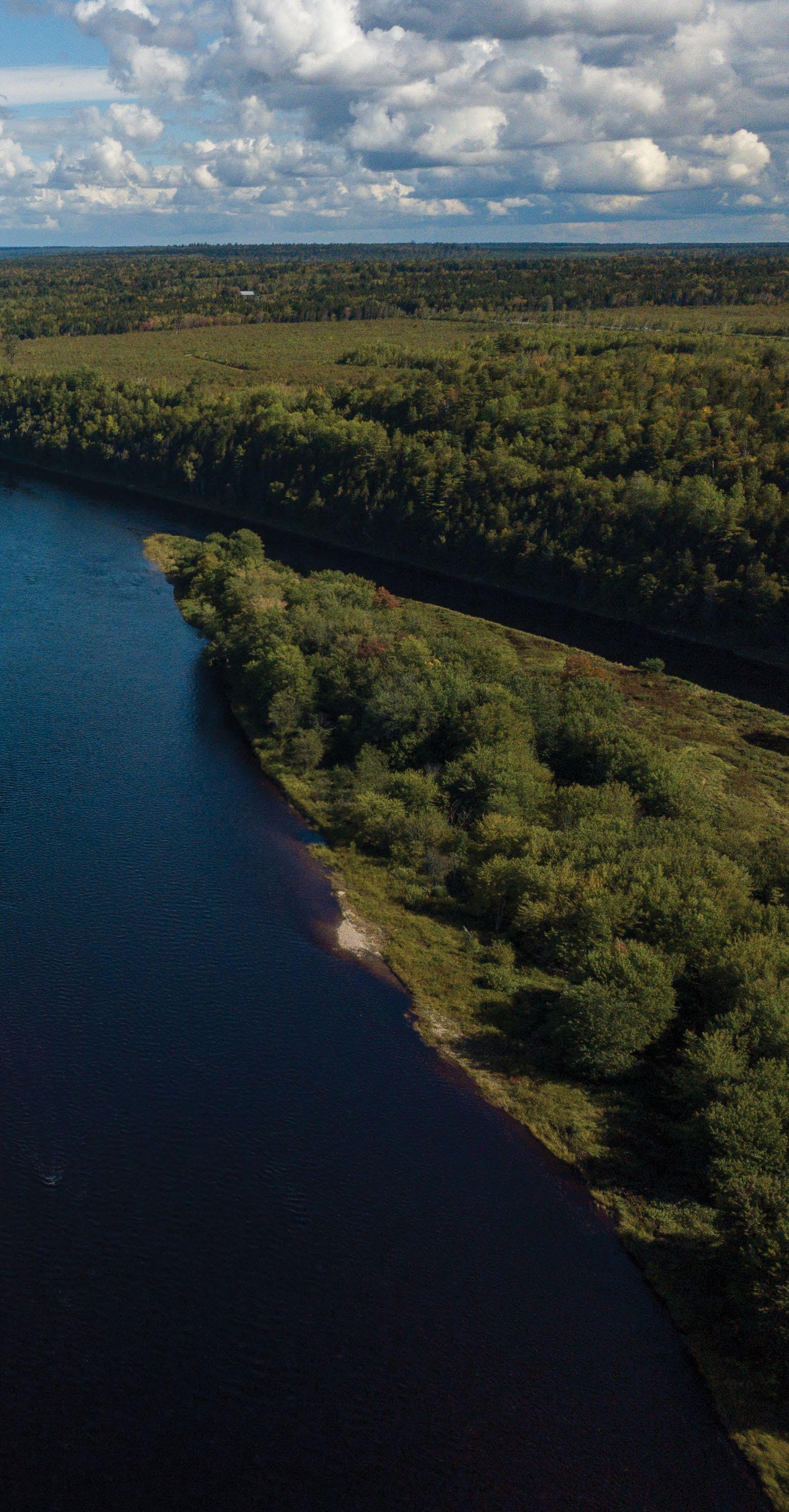
“The power of nature, the climate anxiety experienced by our youth, and the demands from consumers and capital markets for businesses to be net zero focused, opened my eyes to something more meaningful,” he explains.
“And frankly, I am an entrepreneur at heart. So it got me thinking: I have seen ESG take off around the world, and the compelling need around climate action. Meanwhile, there is now a necessity that corporations take steps toward a net-zero world. If I am already buying deforested land, and I am going to reforest it,
11 foundationmag.ca 2022 GTA Giving Guide
FOUNDATIONS
Gary Zed, the founder of CFT, says the company was inspired by his roots in New Brunswick, where he has seen the devastation of forests first hand. Originally from this province, Zed has maintained a salmon lodge there for more than 25 years.
CANADA FOREST TRUST
why wouldn’t I get corporations and individuals involved? It kills three birds with one stone.”
That was the moment Canada Forest Trust (CFT) took root.
In plain language? CFT builds forests for clients to help them get to net zero.
CFT, a national company, has spent the last two years building and refining its offering and beta testing its platform. It now has 25 members on the team, built strategic partnerships and attracted leading experts to its boards.
Using the company’s proprietary carbon calculator, companies and individuals determine their impact on the environment and then CFT can guide them to the type and size of the forest they need to build.
From there, according to Zed, it is a five-step process to achieve your goals, beginning with procurement of the land.
Zed recently launched a sister company — Canada's Land Trust — for farming and forestry families wanting to sell
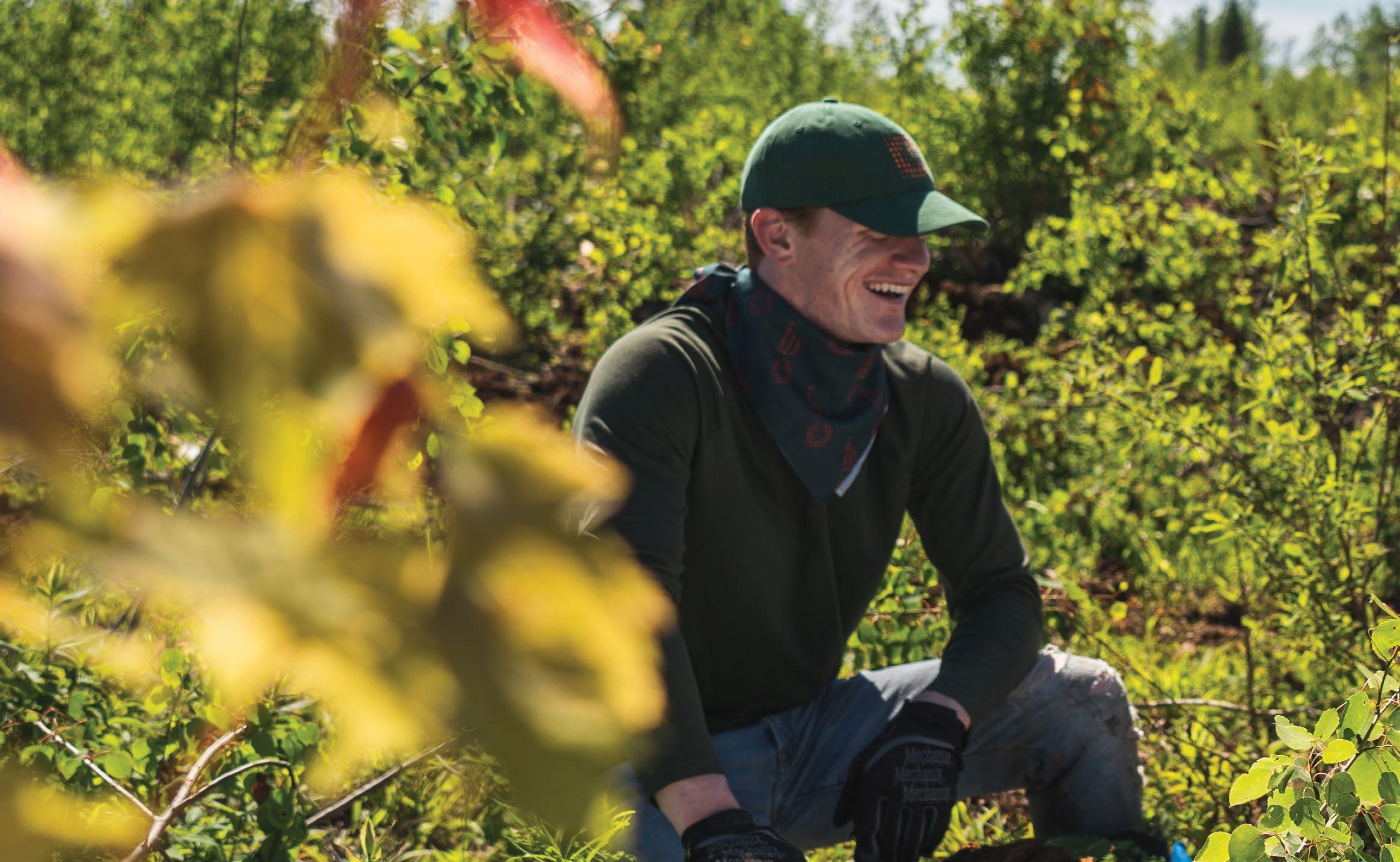
or lease their land for the purpose of reforestation efforts.
“We need to have a portfolio of land available across the country for our customers wanting to participate in forest building exercises to get them to net zero,” Zed says.
Some clients are very focused on economic reconciliation and keen to have meaningful relationships with Indigenous communities. In those cases, partnering with indigenous communities are often crucial to the process, both for their profound generational land knowledge, but also for CFT's program potential to create meaningful economic opportunities and to provide a way of life and skills development for Indigenous youth wanting to remain on their lands.
“When we meet with Indigenous community leaders, we talk about partnership building, sustainable employment, skills development, education, knowledge sharing, and revenue sharing”, said JP Gladu, a
The next step is land preparation, or getting the land ready for its environmental make-over. That includes scarifying the land, performing a species assessment and getting the client upand-running with their very own private portal on the CFT website, known as your “Smart Forest Intelligence Dashboard”.
This digital platform helps put the “smart” in Smart Forests, according to Zed.
The dashboard provides a myriad of information for clients, such as the location of the forest, its type, its age and a breakdown of the species and biodiversity found there. And most importantly, it offers statistics on your path to net-zero.
With its carbon footprint determined, and the land identified and prepared, it
12 foundationmag.ca 2022 GTA Giving Guide FOUNDATIONS
prominent Indigenous leader and former CEO of the Canadian Council for Aboriginal Business, who now serves as the chair of CFT’s Board of Directors, providing a key conduit to Indigenous leaders across the country.
will soon be time for everyone’s favourite step — planting.
Although planting tends to get the most attention, Zed points out this step means little without the final two steps — preserving and protecting.
Trees might be in the ground, but CFT must measure, monitor and maintain the forest to ensure the mortality rate is low through professional inspections and management. These results are then reflected in real time on the client’s personalized dashboard and an annual audited report.
“When you come on board, you end up with a forever forest guarantee. Which essentially means, once we build the forest, we will apply proper forest management to ensure the long term health and maximum carbon sequestration,” Zed adds.
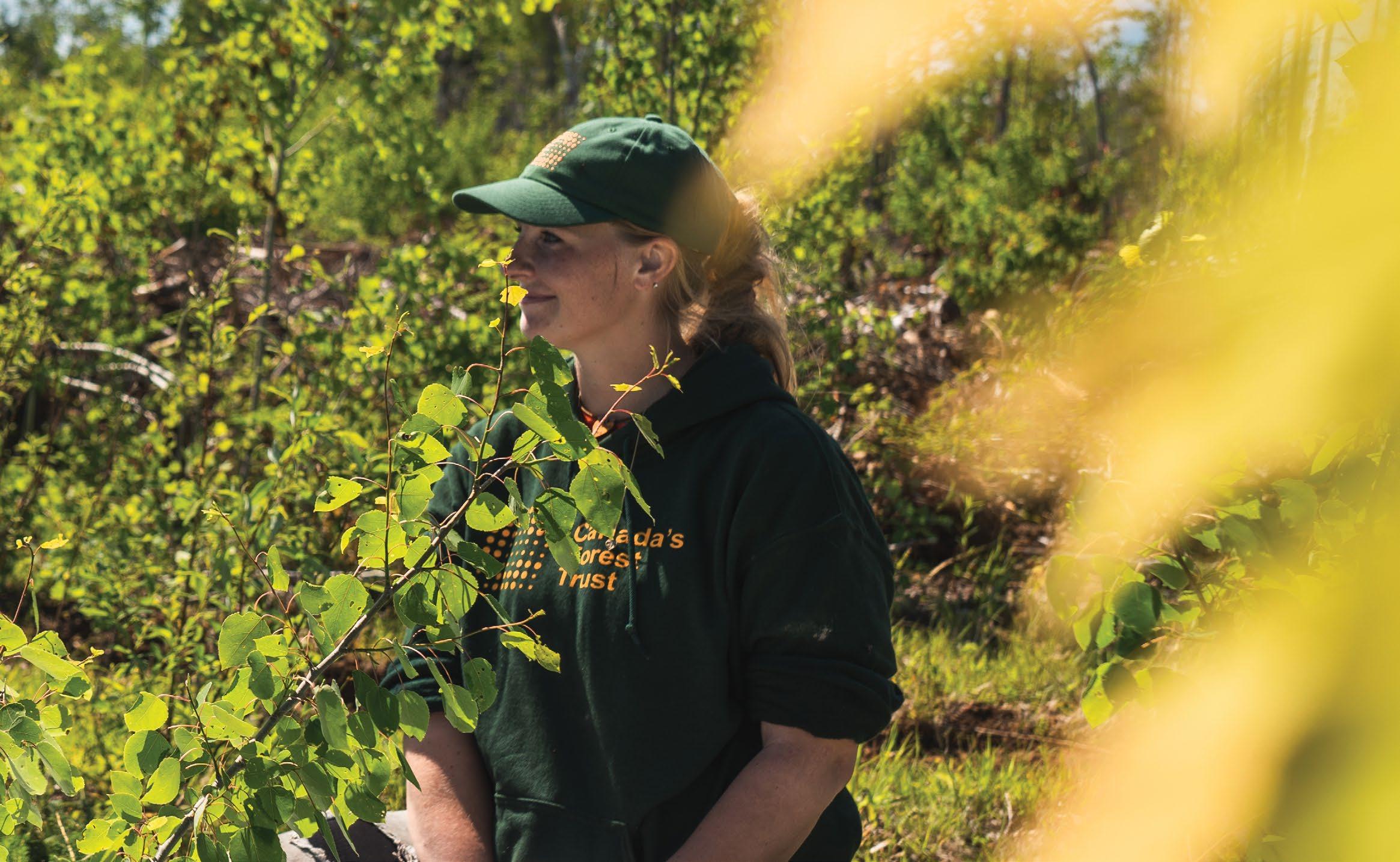
Clients need to be real about their respective climate pledge — most are looking out to 2050 and beyond in terms of their goals to be net zero.
The vision, Zed explains, is to create a real, tangible and personal solution all Canadians can feel invested in.
That means a forest for everyone — whether it be for an individual, a small business, a large corporation and even a school. According to Zed, developing partnerships with educational institutions has been another key area of growth for CFT. Students can now raise funds to create and support a forest for their school by selling seedlings. Its growth and preservation can be incorporated into the curriculum through field trips, digital monitoring and volunteerism.
Zed adds that CFT hired several student interns this past summer, and over the coming years, the company has committed $250,000 for student scholarship programs.
The overarching philosophy, he says, is improving the impact, reporting and storytelling around carbon and biodiversity and the important role each
of us can make to bring nature to the forefront as a solution.

“Democratizing forests to make them accessible to all Canadians so we can all do our part to get to net zero emissions,” he says.
“Many social impacting investments can be out of sight, so the biggest fear is whether you are truly having a measurable and transparent impact. So, CFT is about an authentic turnkey program, where you can experience forest building in a transparent way.”
JEFF TODD is Director of Marketing and Communications at The WCPD Foundation. He is also President-Elect and VP of Partnerships for the Association of Fundraising Professionals (AFP) in Ottawa, Chairman of the Board for the Canadian National Institute of the Blind (CNIB) in Eastern Ontario, an advisor to Beneath the Waves and Co-Founder of the Exuma Foundation of Canada.
13 foundationmag.ca 2022 GTA Giving Guide FOUNDATIONS
After calculating your carbon footprint, Canada Forest Trust administers a five-step process for individuals and companies to build out and protect their forest.
CANADA FOREST TRUST
Giving Isn’t Equal
BY RICKESH LAKHANI AND ANEIL GOKHALE
It’s that time of year when the focus is on giving. But we think that needs to be different — the focus should be on being in service to others. So what does that shift look like? We’re here to share how this can be done.

Generosity is a powerful force. It can unite people. It can lift communities. It can move mountains.
As it stands though, while Canada is a diverse and beautiful quilt of different people, cultures, and races, generosity isn’t being shared equally. The Unfunded report outlines the disturbingly low support for Black-serving organizations, which are receiving as little as 7 cents for every $100 donated despite representing 3.5 percent of the Canadian population. Indigenous groups received about 0.5 percent of funds despite representing 4.9 percent of the population in Canada. Overall, 66 percent of the donations made in Canada go to just 1 percent of charities .
There are many reasons why funding isn’t making it to all corners of society, for example a lack of representation by marginalized communities in decisionmaking roles. However, groups that are serving and led by those most impacted by social issues are powerful forces to tackle broad issues affecting society. This is where so much of the innovation and impact in social change often happens.
Closing the gaps
Knowing that there are significant imbalances in giving, it’s important to consider them when making giving decisions:
❯ If supporting healthcare is important to you, what about an Indigenousserving, led, and focused organization like Anishnawbe Health Foundation;
❯ If tackling education gaps is an area you want to impact, what about a Blackserving, led, and focused organization such as Visions of Science;
❯
Instead of directing philanthropy towards the largest charities, consider smaller and lesser-known organizations with budgets under $1 million, which represent the majority of charities in Canada, such as Youth Empowering Parents; and
❯ Consider groups that aren’t charities such as not-for-profits and communityled grassroots organizations. While you don’t get a tax receipt, many organizations with different models are doing innovative and important work, and there is a push for revised legislation in Canada which makes distributing funds to organizations like Helping Hands much easier.
A number of groups are already working towards closing these gaps and helping to reshape giving such as The Circle on Philanthropy, Foundation for Black Communities, The Black Opportunity
14 foundationmag.ca 2022 GTA Giving Guide
ISTOCK/ DRAZEN ZIGIC
Fund, and Justice Fund. In addition, Toronto Foundation annually releases the Good to Give Guide which highlights lesser known, often grassroots, and highlyimpactful organizations to consider.
This is not an exhaustive list, just a starting point. When it comes to giving, you can do your own research and have honest, meaningful conversations with social impact organizations to learn about their work.
How you give
In addition to the destination of giving, the process matters.
Power and control are often concentrated into the hands of a few. You can help change that by shifting wealth and decision making. Often, decisions are being made about communities without their input or leadership. This is a missed opportunity to engage the expertise and lived experiences of people to inform and guide where resources go and how they can be used to best serve the community.
As global consciousness about the need to shift towards more equitable philanthropy continues to grow, there are many initiatives and movements such as Trust-Based Philanthropy, Participatory Grantmaking, and Community-Centric Fundraising, that are reminding us of important themes and considerations that need to stay at the forefront of giving
decisions.
For those in a position to distribute wealth and power, some key guidelines are:
1. Ensure that decisions are made with the mantra “nothing about us without us” so that communities impacted by issues are providing input and leading funding decisions and processes.
2. Recognize the power dynamics inherent in funding relationships and how they can hinder a strong relationship founded on trust and mutual interest in impact.
3. Increase sustainability through multi-year commitments so that organizations can confidently hire staff and invest towards the future.
4. Provide unrestricted giving which reduces administrative burden and allows those doing the work to make decisions on where funding can have the biggest impact.
5. Reduce the burden that is created for social impact organizations in seeking, using, and reporting on funds so that they can focus efforts on the on-the-ground work.
6. Be transparent about giving processes and decisions so that everyone is operating in good faith and time isn’t wasted.
7. Embrace philanthropy as a tool for healing, equity, and for economic, social, and racial justice.
Where do we go from here
Philanthropy continues to evolve. Given what we’ve shared here, we know this won’t happen without time, commitment and action. So we leave you with this question and invite you to reflect on this as you approach your next giving decision. How can I be more mindful of the impact of my giving and what work do I have to do in order to create that impact?
Better philanthropy is possible. You can be part of making it happen.
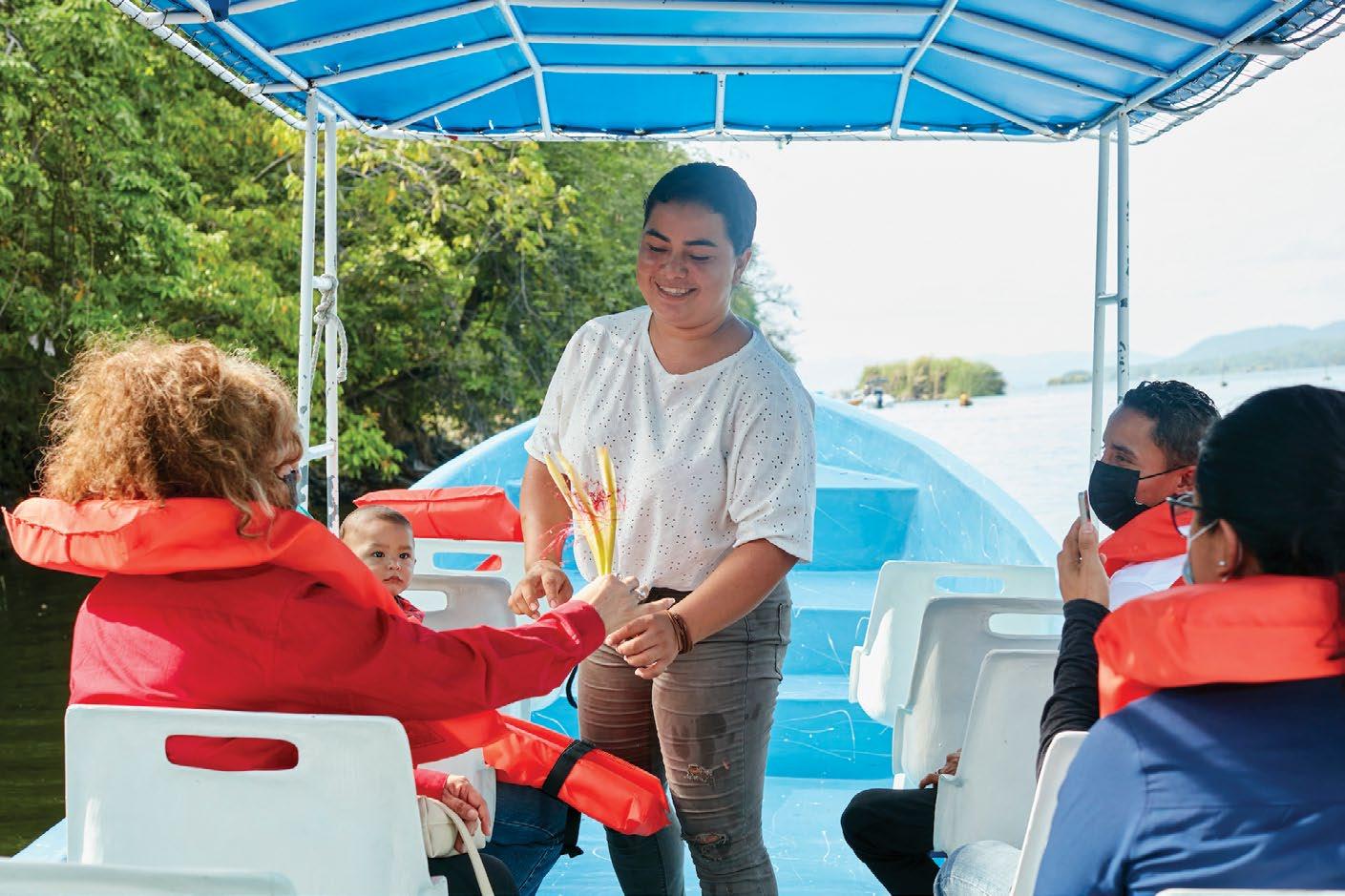
RICKESH LAKHANI believes that we are all responsible for each other’s success. He has over 15 years of experience in the social impact sector. He is the Founder of Radiance Advisory, supporting social impact organizations to align their actions with their values and build stronger cultures based on truth and trust. Prior to this, he was the Executive Director at Future Possibilities for Kids, a community-based organization serving children, and the Director, Campaign at United Way York Region, leading an $8M annual fundraising campaign. He sits on the Global Council for Community-Centric Fundraising, advocating for equity and social justice in philanthropy. He is a work in progress.
ANEIL GOKHALE is passionate about the intersection of philanthropy and community. Increasingly motivated by equity and social justice, he deeply focuses on ensuring that philanthropic resources are directed where they are needed most. He is currently Director, Philanthropy at Toronto Foundation where he helps individuals, families, professional advisors, companies and charities engage in strategic philanthropy. Since 2018, Aneil has been focused on “changing the face” of Canadian philanthropy and he and his team have welcomed 200+ new donors to the Foundation, all under the age of 45 and representing the varying diversity throughout Toronto. Aneil has worked in the philanthropic sector for over 15 years.
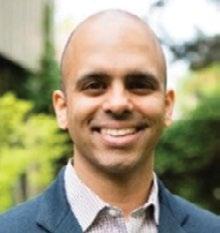
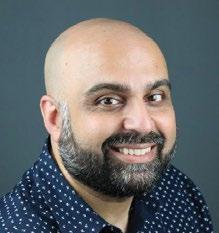
1. Unfunded: Black Communities Overlook by Canadian Philanthropy. Pereira, Abokor, Ahmad, Abdikkarim. Report prepared by the Network for the Advance of Black Communities and Carleton University’s Philanthropy and Nonprofit Leadership program. 2020.
2. Canadian charities giving to Indigenous Charities and Qualified Donees2018. Redsky, Brascoupe, Blumberg, Lang. Analysis of 2018 charity T3010 annual returns in Canada. 2021.
3. The Giving Report 2018. CanadaHelps. 2018.
15 foundationmag.ca 2022 GTA Giving Guide GIFT PLANNING
Have honest, meaningful conversations with social impact organizations to learn about their work.
Five Must-Dos When Hiring a Major Gift Officer
2. Create dedicated major-gift position(s)
BY JENNY LOVE
Almost 80 percent of the $373 billion given to charities comes from individuals. And even when it’s a corporation or foundation making a gift, it’s a person making the decision. If you’re looking to start a major gift program, finding staff with the relationship skills necessary to cultivate these important relationships is critical.
Here are five must-dos for hiring (and keeping) successful major gift staff, according to Dan Otto, a fundraising consultant at Marts & Lundy.
1. Cultivate a positive image and a compelling case
Major gift officers need a product they can feel confident standing behind. This means that before you hire anyone to start a major gift program, you need to ensure your foundation has a vision and a positive image.
It’s not only about having a positive image of the foundation. The organization needs to have a positive image in the community too. Large-dollar donors view their contributions as investments in your organization. They won’t make an investment in an organization that's not doing well or has a poor reputation.
To increase your visibility and image, it’s important to keep your community informed about the impact the foundation and the organization are making on care, and for the CEO to be visible in the community.
To run a successful major gift program you need staff entirely dedicated to major gift efforts. Some foundations try to carve out major gift responsibilities from an existing position, but this is a mistake. If your major gift officer has responsibilities with concrete deadlines, like events or annual giving, it’s easy for that person to continuously put major gift — which requires long-term relationship building and are not deadline-focused — on the backburner.
Securing a major gift can take 18 months. Your major gift staff need the time and attention to nurture their prospects without being constantly sidetracked by other responsibilities.
3. Design balanced portfolios
Each full-time, major gift officer should be able to handle 100 relationships once they are fully on-boarded. Their portfolio is made up of people at different stages at any one time: 25 percent of their prospects should be in solicitation mode, 50 in cultivation mode, and 25 percent in qualification mode.
4. Be principled about recruitment and retention

The average tenure of a major gift person is about two and half years, and a major gift relationship takes about 18 months to develop, so it’s very important for the sustainability of your organizations is to recruit and retain the best major gift officers you can.
There are five core competencies to look at when hiring a major gift officer: ❯ Action orientation: even if the face of minimal information;
❯
❯
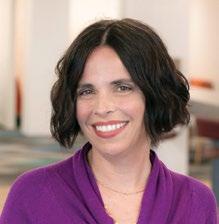
Approachability and ability: to build rapport with donors, physicians, executives, and volunteers;
❯ Business acumen: Ability to keep up to date on internal policies and practices, as well as the latest trends in philanthropy;
Listening skills: Successful gift officers ask probing questions and then sit back and listen actively to the answers; and
❯ Diplomacy and tact: Ability to handle disgruntled donors and physicians.
Finding a good major gift officer is just the beginning. To reduce turnover, you need to invest time in career paths and development. Give you gift officers a mentor to work with. Ask them where they want to be in three years, and then support them to get the skills and resources they need to get there.
5. Foster a collaborative team environment
As the chief development officer, you are the conductor and your staff are your orchestra, so be sure to give them the direction they need to succeed. This means meeting weekly with your gift officers, and including your annual giving, event, research, and data management staff. We often work in silos, but all of the roles on your development team are interconnected. You never know when the person who purchased the highly coveted auction item at your annual fundraiser might become a major gift prospect down the road.
16 foundationmag.ca 2022 GTA Giving Guide MANAGEMENT
JENNY LOVE is the Chief Content Officer for the Association for Healthcare Philanthropy.
VECTEEZY.COM









Understanding Fundraising’s Costs
 BY CYNTHIA ARMOUR, CFRE
BY CYNTHIA ARMOUR, CFRE
Fundraising costs and overhead have often been a topic of controversy for investors and contrarians alike.
I haven’t heard as much lately; it seems we've had more pressing concerns! It’s tempting to leave well enough alone and yet, I prefer encouraging continued dialogue and a lifelong pursuit of knowledge.
Donors have every right to ask a charity what percentage of their gift goes to programs and services but be wary of a simple answer! Unfortunately, some
charities have perpetuated the myth that low fundraising costs implies they’re more efficient than their ‘competition’s’ higher overhead...but wait. Are they comparing an apple to an apple, an Empire to a Russet or some other fruit altogether?
There will always be a cost to doing good — or bad — business; it’s the responsibility of staff, boards and investors to differentiate between the two. What we should all ask is whether we are more concerned about low costs at the expense of getting results that
make a difference in the lives of those we serve. If so, one needs only to Google “The Nonprofit Starvation Cycle” to discover how self-defeating that mindset is.
Fundraising Guidance
Canada Revenue Agency’s most recent Fundraising Guidance was issued in 2012 and yet based on continued reporting errors, the number of charity leaders who’ve read or follow it thoroughly is questionable. The Fundraising Guidance is necessary reading...and given its
18 KICKER foundationmag.ca 2022 GTA Giving Guide
ISTOCK/ VECTORINSPIRATION
dry content, I’ve kiddingly suggested it is particularly useful for those with insomnia. Regardless of whether it’s entertaining or not, CRA is the federal regulatory body for registered charities in Canada so it is advisable to pay attention!
Section 82 of CRA’s Fundraising Guidance introduces “High fundraising expense ratio” (a self-assessment formula that helps registered charities — and donors who review Form 3010 Registered Charity Information Returns — to calculate reasonable cost ratios based on adding Lines 4500-receipted donations and 4630-non-receipted fundraising revenues and dividing that sum by Line 5020-fundraising expenses).
But if charity leaders aren’t following the Guidance, are they accurately counting all their fundraising expenses?
Aside from whether charities count costs consistently, CRA, along with many informed major donors and funders, recognize that numerous factors contribute to the cost of fund development, including the:
❯ age or maturity of the organization and its development department (if there is one)
❯ size of the charity and its overall and fundraising budget
❯ geographic location and reach of its community
❯ sophistication and effectiveness of the charity’s infrastructure and systems
❯ popularity of the cause (or lack thereof)
❯ methods used
❯ sources of fundraised income
❯ fundraising skills of staff
❯ strength and involvement of the organization’s board and senior staff
❯ use of volunteers
❯
averaging costs (over a period of three to five years).
The development profession has reasonable fundraising cost guidelines; in extremes, these can range from $1.50 to have a new donor give $1.00 to $0.10 - $0.20 to renew their support. In the case of young, small, unpopular, remote or even naive charities, are those costs acknowledged by their charitable boards when approving a budget? For instance, the acquisition of a donor is one of the most expensive aspects of raising money. So, rather than being horrified that efforts cost 1.5 times that of revenues raised, ask whether this charity is equipped to foster that newly acquired relationship to ensure they “amortize” that expenditure over the lifetime value of the donor (LTV).
It’s up to us as investors to decide whether we’re asking the right questions or, are we being penny wise and pound foolish? Do we care more about low costs or how much the charity accomplishes? What appears to be a simple way to assess efficiency may totally overlook fundraising and organizational effectiveness.
In a recent Association of Fundraising Professionals’ blog entitled “3 Impact Metrics Nonprofits Aren’t Using (But Really Should)” they recommend collecting and analyzing a core set of data, including:
❯ Cost per Successful Outcome (measuring the impact of the charity's services and programs)
❯ Constituent Retention (donors, clients, volunteers, staff, partners)
❯ Fundraising Return on Investment (for a more comprehensive, decisioninforming picture of the impact and effectiveness of various methods)
And asking the following questions:
❯
What was done?
❯ How well was it done?
❯ How are participants better off?
Data gathering is cumbersome but if systems are implemented in advance and charities build in measures at the outset, results are easier to extract and report. The biggest challenge in under-resourced charities is building the board and chief executive’s knowledge so they are on more equal footing with their larger charity counterparts.
There is no simple answer to fundraising and overhead costs. I mentioned contrarians in my opening because I wonder if the loudest voices actually donate to charities at all?! I encourage all donors to ask thoughtful questions and understand our decisions are driven by both heart and head; if we’re passionate about a cause, our choice might seem less rational. So ask yourself...do I care enough about the work of this group to help them make a difference? Then, see if they report back their results, between their requests for support...or do you feel merely like an ATM? Your philanthropic choices are yours to make and asking the right questions will always help charities grow. Thanks for your generosity.
CYNTHIA ARMOUR, CFRE, (www. linkedin.com/in/cynthiajarmour/) is a donor and consultant with registered charities and nonprofits nationwide. She has spent the last 31 years facilitating, training and coaching board members, volunteers and senior staff to strengthen governance, strategy, fund development and communications. cja@elderstone.ca
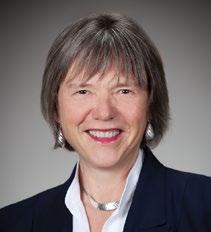
19 foundationmag.ca 2022 GTA Giving Guide FINANCE
IT'S UP TO US AS INVESTORS TO DECIDE WHETHER WE ARE ASKING THE RIGHT QUESTIONS...
Harvesting Growth: A Data-Driven Approach to a National Expansion
BY JENNIFER ROBINS
In early 2020, Second Harvest, a Toronto area-based food rescue organization, kicked off the initial phases of a three-year strategic plan, including a national expansion of its services. We all know what happened next. The COVID-19 pandemic hit in March 2020, and the world turned upside down.
For Second Harvest, this required a huge leap of faith as they accelerated the three-year roll-out into three weeks. One of the keys to its success in expanding nationally was leveraging data and analytics to grow its donor base exponentially and quickly.
The Story
Second Harvest’s mission is to grow an efficient food recovery network to fuel people and reduce the environmental impact of avoidable food waste, a united goal of environmental protection and hunger relief. There are over 31 million tonnes of nutritious, perfectly edible
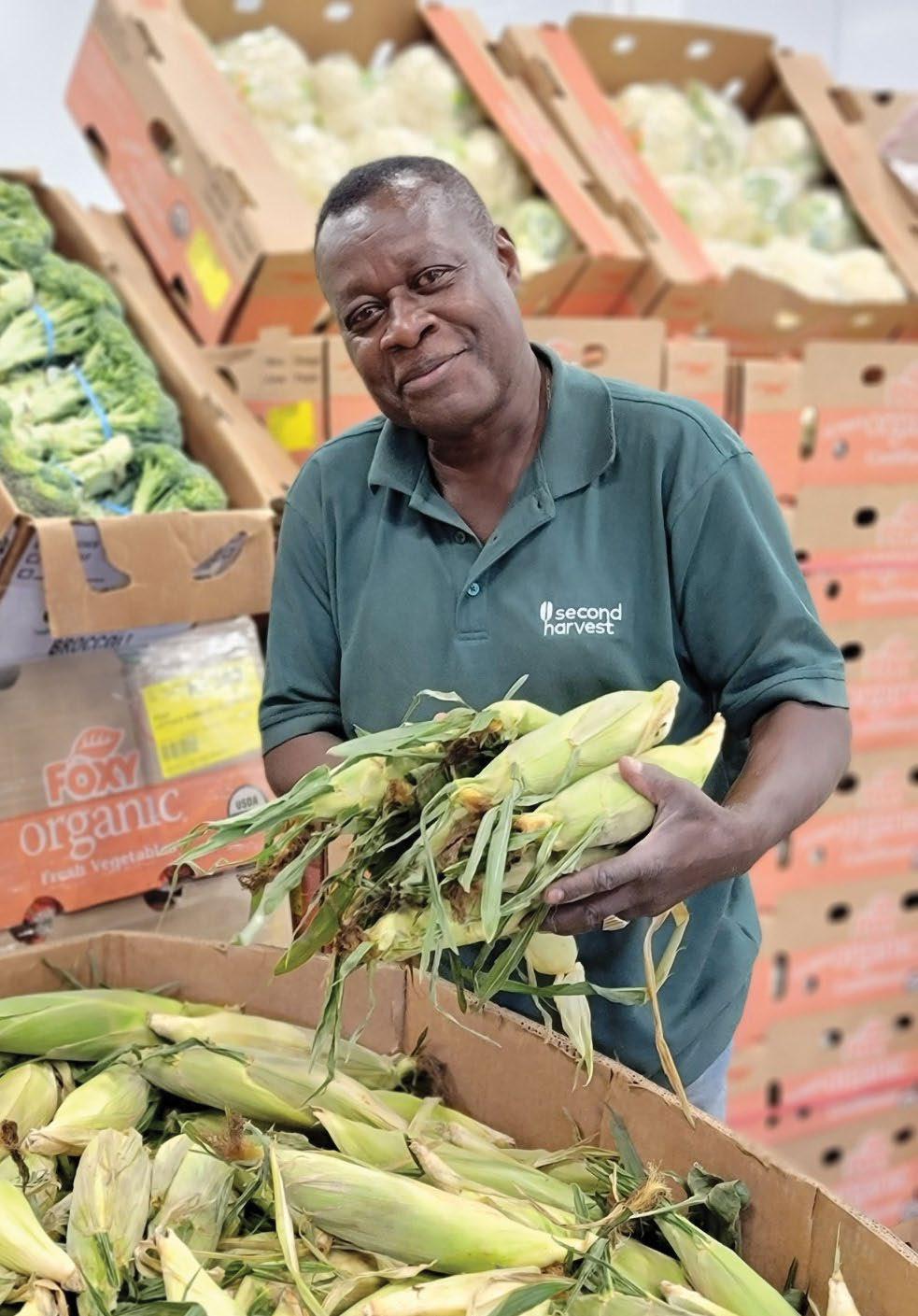
food thrown out every year across the country, and Second Harvest rescues these resources and redistributes them through its partners in the invisible food network. Four times the size of grocery chains in Canada, this network includes more than 61,000 organizations that provide food to vulnerable people.
When the pandemic hit, 1 in 8 Canadian households was reported to be food insecure, growing to 1 in 6 since 2020.
At the onset of the pandemic, the team at Second Harvest adopted the mantra ‘leave no one behind’. Second Harvest immediately recognized that it needed to grow its donor base exponentially to achieve its goals. Data and analytics were the only way they would get there efficiently and effectively.
The Database
The first step in this analytics transformation was to evolve out of storing donor data in Excel spreadsheets and migrate the organization’s valuable
donor data into a proper donor management system. Second Harvest integrated its donor data into Raisers Edge NXT, which has been instrumental in capturing important insights on which to base key metrics.
Data Collection
The second step was collecting additional data. The team surveyed their current donors via SurveyMonkey to understand Net Promoter Scores (NPS), donor motivations, and donor satisfaction indicators. Additionally, this included partnering with Environics Analytics to bring in market-level data to fill in the donor data gaps; this blends into step three — the Data Analysis.
Data Analysis
Through the partnership with Environics Analytics, the Second Harvest team brought its donors to life through PRIZM® segmentation. This analysis shared key demographics, giving history
20 foundationmag.ca 2022 GTA Giving Guide CHARITY MARKETING
and patterns, channel preferences, media consumption, and core values and beliefs. Most importantly, because these data are at a postal code level, Second Harvest knew exactly where to find like-audiences across the entire country.
Targeted Outreach
Leveraging these donor profiles, Second Harvest started to test targeted outreach by mailing 100,000 pieces to their top three donor segments. To do this, Second Harvest partnered with Canada Post to hand-select individual PRIZM segments for an addressed mail piece. The PRIZMtargeted envelopes delivered resulted in an average gift three times higher than the test.
In parallel, the team focused on its Heart of the Harvest monthly donors. Thanks to these donors, Second Harvest is able to rescue enough food to prepare 65,000 meals monthly.
Given that Heart of Harvest donors skew younger, Second Harvest recognized
that a monthly approach is ideal as this demographic is used to subscription payments for goods and services (e.g. Netflix, Spotify). The goal for this campaign was to grow the monthly donor program by 130 net new donors across Canada. The team went to work, writing scripts using SocialValues and insights from survey responses, while the telemarketing team spent 300 hours on the phones and mailed a targeted group of current donors.
Not only did Second Harvest get 130 new monthly donors, but they acquired 389 in total!
Success and Expansion
This growth in donors has supported Second Harvest in its national expansion. Since the early days of the pandemic, it has expanded from coast to coast to coast, partnered with thousands of new charities, and delivered 51 million pounds of food. The food has been delivered via transport trucks, sea lifts,
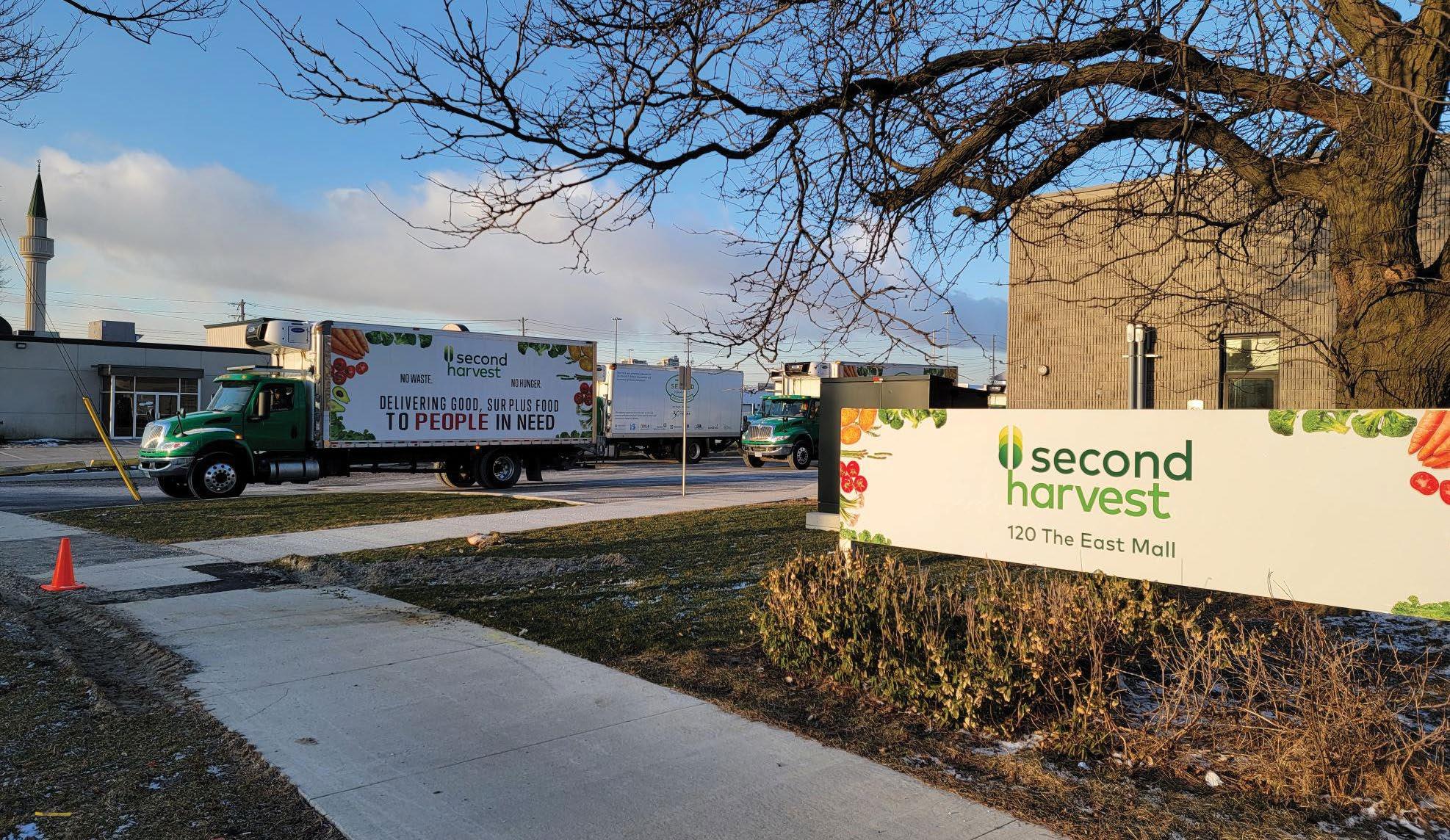
airplanes, snowmobiles, sled dogs, the food rescue app, and more. Leaning into this data-driven approach, Second Harvest exceeded its 2021 target by $1M, which is an extra $2M in meals for people in need.
Pivoting strategies in the face of adversity and seeing results can be done — Second Harvest has proven this. The first step should always be to know who supports your cause and what motivates them, be it from surveys, data analytics, or in Second Harvest’s case, a mix of both.
JENNIFER ROBINS is the Not-forProfit Lead at Environics Analytics. Jennifer helps healthcare clients solve their business challenges using the Environics Analytics’ suite of data products and services. She brings fifteen years of sales, marketing and analytics experience across education, travel, finance, notfor-profit, government, and healthcare industries. ©PRIZM is a registered trademark of Claritas, LLC.
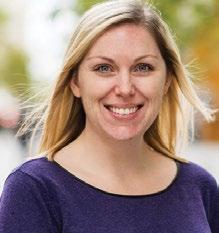
21 foundationmag.ca 2022 GTA Giving Guide CHARITY MARKETING
Leading a Movement to Drive Change for Mental Health

 BY SARAH CHAMBERLIN
BY SARAH CHAMBERLIN
We are in the midst of a global mental health crisis. Mental health has historically lagged behind other areas of research and care, and it continues to be riddled with trial and error. People often search and suffer for years before finding the right treatment for their illness. Many are losing potential and hope, and some are even losing their lives.
The Centre for Addiction and Mental Health is Canada's largest mental health hospital and a source of hope for Canadians and people around the world. The CAMH Foundation is charged with inspiring philanthropy to help transform the way we understand and treat mental illness. Our generous and dedicated supporters help CAMH advance discovery and innovation, build spaces that promote recovery, and break down the stigma of mental illness.
The mental health movement has never been stronger than it is today. Attitudes are changing, knowledge is evolving, treatments are improving, and potential cures are emerging. Everyone has a reason to support this movement, and with your help we can continue to make breakthroughs, dismantle barriers, and save lives.
The Importance of Investing in Mental Health
As a global leader in mental health research, CAMH aims to revolutionize the understanding of the brain, use evidence to drive social change and optimize care, and inspire hope for those with mental illness.
We want to reform our understanding of the brain and the causes, biomarkers, and treatments for mental illness. We are
transforming the way we do research so that all CAMH patients and staff have a role in advancing discovery. The ongoing investment from our community of donors and advocates in continuing this research is what allows us to drive system improvements and social change that will optimize care for all.
CAMH is accelerating life-saving research and translating new discoveries into advancement and innovation in mental health care. Donor support fuels CAMH scientists and programs that will deliver more personalized treatments and equitable care so that more people recover faster.
Some ways in which CAMH and our community of supporters are driving change include:
❯ CAMH-wide BrainHealth Databank, which aims to accelerate research and improve care by collecting and studying data that individuals choose to share. This first-of-its-kind initiative is helping mental health professionals find cures in the data by enhancing understanding and diagnosis of mental illness and improving new treatments and prevention strategies.
❯ CAMH’s womenmind, a community of philanthropists and thought leaders tackling the unique gender issues that underrepresented people face when it comes to their mental health. Members of the womenmind community connect with and learn from each other while driving change for women’s mental health and women in science.
❯ CAMH’s Business Leaders for Mental Health Action, a philanthropic coalition of Canadian business leaders and companies committed to improving the psychological health and
safety of employees and advocating for businesses to take action. Members in this coalition commit to taking a stand in support of better mental health, breaking down stigma, implementing organization mental health strategies, and supporting better outcomes for people living with mental illness across the country.
Everyone Has a Reason
We all have our own reasons to drive progress in mental health: it could be because of your own personal experience or that of your family, friends, coworkers, and others in your community. What matters most is turning that reason into action. Investment in research is what will take mental health outcomes and care to the next level.
You can help more people receive the quality of care they deserve, when and where they need it. Your investment today will not only support programs that improve the patient experience for those in recovery at CAMH but also fuel the groundbreaking mental health research that is transforming care and saving lives globally.
This year Giving Tuesday is on November 29th and it’s a great opportunity turn your reason into action.
SARAH CHAMBERLIN is Chief Marketing Officer and Vice President, Community Giving and Engagement at CAMH Foundation. She brings a unique combination of private sector and not-for-profit leadership experience to the organization. Sarah and her team are the driving force in developing powerful marketing and communications strategies that inspire people to join the movement and support CAMH, Canada’s leader in mental health.
22 foundationmag.ca 2022 GTA Giving Guide LEADERSHIP
ISTOCK/ RAWPIXEL
Four Types of People a Gift Officer Needs to Succeed
BY JENNY LOVE
The role of the gift officer is that of a director, not the star of the show. Gift officers set up strategy discussions between prospects and influential people at their organization, and they are responsible for follow-up and solicitation. But during the discussions themselves they should play a supporting role.
Here are four people your major gift officers need to establish relationships with to make their own show a blockbuster, according to Dan Otto, a fundraising consultant at Marts & Lundy.
1. Your CEO
Having the CEO at the table with your prospects or donors shows the importance of what the foundation is doing, but CEOs’ time is precious. Your first job is to demonstrate why they should spend it with your potential donors. Show them the numbers: how many prospects you have, the return on investment, and the cost to raise a dollar. Once you have their attention, identify key prospects that your CEO can manage.
CEOs are experts at articulating the vision of your organization, and that should be the main focus of their conversations with prospects. When donors hear about the organization’s future directly form the CEO, they gain confidence of the return on their investment since they know that the CEO is going to make sure that the plan comes to fruition.
2. The Medical Staff
Donors enjoy getting to know the development professionals, but at the end of the day, they want to look someone in the eye who's seen patients every day and learn about their experiences. Involving your medical staff in the
major gift process gives potential donors this chance and shows them that their gift is important. Physicians can share stories of their work and the impact of philanthropy on patient care.
If you’re struggling with physician engagement, this is another area in which to involve the CEO. Your CEO can help you pinpoint physicians who may not be in leadership positions but are well respected among their peers and set up conversations with them about the importance of philanthropy, both generally and specifically to projects the physicians are interested in.

One beneficial way to find medical staff to work with you at prospect meetings and for grateful patient fundraising is to look for physicians and nurses who have previously donated to your foundation. Medical staff donors clearly understand the importance of philanthropy and may be more amenable to an ask for support.
When encouraging a physician or nurse to work with your foundation, share your vision with them and spark their imagination by asking them how they would spend $1 million in philanthropy over three or five years. When you get a physician to work with you and you have a success, publicize it as much as you can with other physicians to start a virtuous cycle.
3. Volunteers
The right volunteers bring credibility and prestige to your organization. Donors know that volunteers are not paid and are doing their work out of the goodness of their heart. Volunteers can also make donors feel connected by telling their own personal story.
It’s important to set expectations with volunteers on the extent to which
they can be involved in the prospecting process, but once you do that, volunteers can work with a manageable portfolio as peer screeners and for thank-you calls. They can also potentially open doors to their personal networks.

4. Board Members
Interacting with the Board shows donors the importance of their gift, but Board members can be reluctant to ask people for money. One of the easiest ways to engage your Board members and quell their fears is by asking them to make a well-placed thank you call to a donor.
It’s really important for Board members to see each other working for the foundation to reduce their anxiety about philanthropy activities. Ask Board members to talk about their work with the foundation at Board meetings to encourage others to contribute to the effort.
It takes confidence to feel comfortable out of the limelight, and skill to bring the right people together in conversation, but major gift officers who can work with executives, medical staff, and volunteers to do both will create donor relationships that prosper.
23 foundationmag.ca 2022 GTA Giving Guide STEWARDSHIP
ISTOCK/ BERNARDBODO
JENNY LOVE is the Chief Content Officer for the Association for Healthcare Philanthropy.
Moorelands Kids
Children and youth living at-risk and in financial marginalization face barriers that other kids don’t.
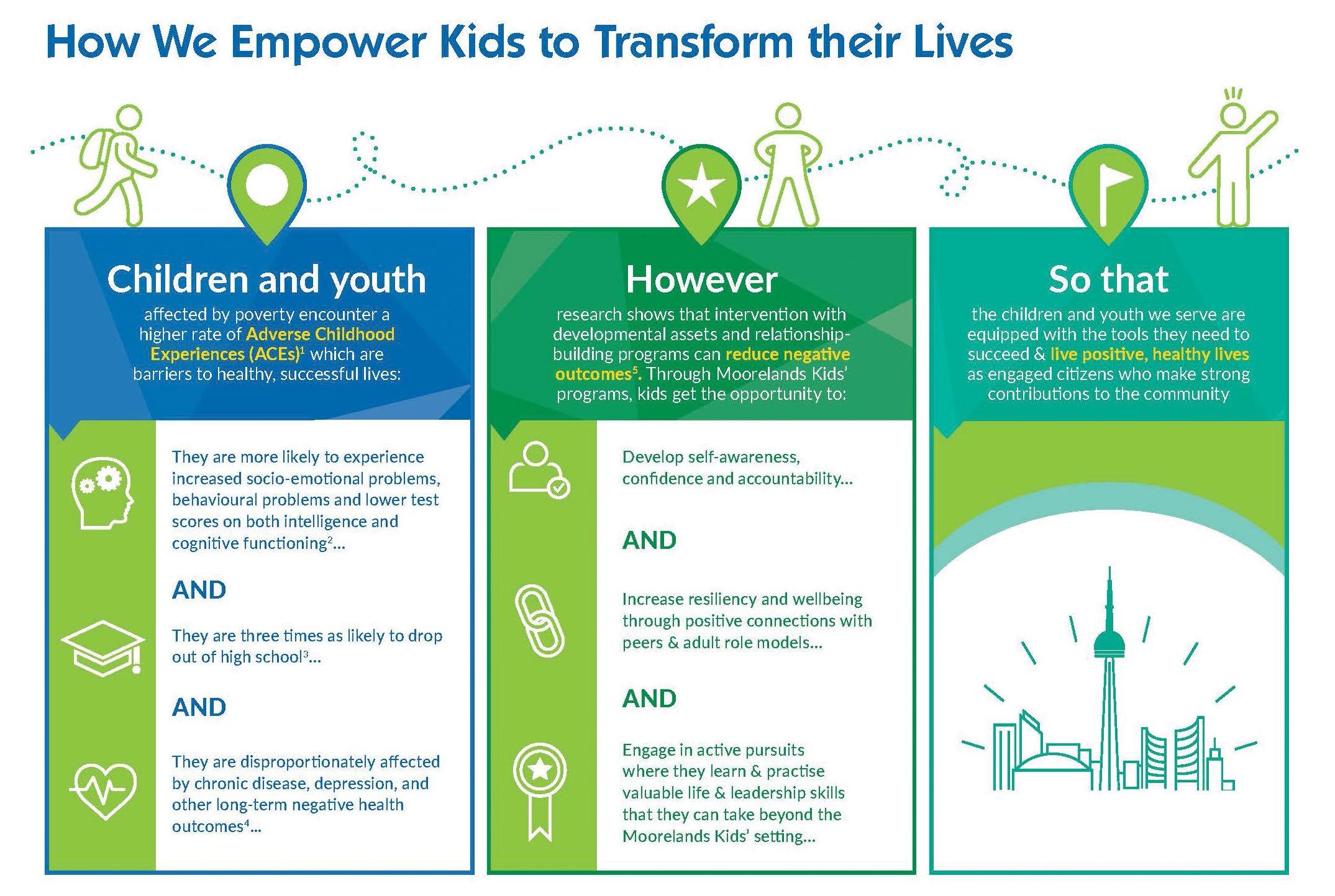
OUR MISSION
Established in 1912, Moorelands Kids’ mission is to bridge the opportunity gap through skill-building experiences, empowering kids to overcome the barriers to success.
Where poverty intersects with race and equity issues, we fail as a city, and we fail our kids. YOU can make a life-changing difference.
Join a Top 100 Charity in Canada, offering a continuum of programs that build character, resiliency and strength in Toronto’s most vulnerable children and youth. Step up to break down barriers to resiliency and create connections with Moorelands Kids. Help us expand our reach. YOU can put tools into the hands of vulnerable kids today. Let’s Talk - Contact Us.
2022 GTA Giving Guide foundationmag.ca 24 2022 GTA GIVING GUIDE
ltilley@moorelands.ca |
Ext.
|
you can
Lynda Tilley, Executive Director Moorelands Kids
416-466-9987;
308 Moorelands.ca Colette K. Halferty, Director, Development & Communications chalferty@moorelands.ca
416-466-9987 ext. 307 Moorelands.ca To learn how
break down the barriers to opportunity for Toronto Kids living in financial need, visit Moorelands.ca or contact us directly



Charitable Registration #119230242 RR0001 Our Staff, Board and Organizational Chart are available. TO DONATE https://www.moorelands.ca/foundation Offering amazing experiences to kids since 1912.
The Animal Guardian Society
It’s been over 30 years since Kathy Asling found an 8-weekold puppy on the street. She immediately called every possible link to the pup’s owners and ran an advertisement in her local newspaper. A reporter who saw the ad called Kathy to write a cover story.
Although no owner was ever located, she received almost 200 calls to adopt the puppy. She instinctively screened prospective adopters and conducted home visits. Kathy decided on a home but had names and numbers of several families she felt would provide a loving home to a dog. The next day she visited the local shelter and started ‘match making’ by contacting the people who had called her looking to adopt.
pet owners in the Toronto and Durham Region area.
As an animal rescue group we know how important it is to microchip pets. You cannot predict what will happen in the future so we always advise responsible pet owners to make an appointment for this quick and painless 5 minute (or less) procedure. It’s better to be safe than sorry. With other expensive options out there, we also know that many pet owners decide not to proceed with micro-chipping their pets because of the price. That is why TAGS initiated a cheap way to microchip, saving a good amount of money (instead of paying $90 and up). The revenue goes toward a good cause – helping dogs & cats in need through The Animal Guardian Society.
How We Use Your Money
Identifying the need for someone to step up and save the lives of good dogs from being put to death, Kathy and her daughter created the name The Animal Guardian Society (TAGS). In March of 1987 the first Durham Region based rescue was formed.
Kathy set out to meet with individuals who could mentor and guide her into developing a program that would operate with integrity and ethics that would promote humane education to our community and find homes for displaced animals.
Perhaps the most difficult task in the early days was creating relationships with Animal Controls. Rescue in those days was a foreign word, and the constant struggle to save animals from death and research labs became a task that proved to be emotionally and physical draining. It soon became evident that this was not the job for one person. Kathy needed help.
Now 30 years later and thousands of dogs successfully rehomed, she has yet to stop! Kathy and her corps of volunteers work closely with animal shelters, humane societies, and the community to improve the lives of canine citizens.
Today, TAGS is a charitable non-profit organization and does not receive any government funding. We are entirely reliant on public donations for funds. Other than monetary donations, TAGS needs other pet care items like good quality dog food, dog beds and blankets, leashes and collars, winter coats, dog toys, etc. We also need other items like building materials and services.
The Animal Guardian Society’s microchip clinics have become a popular tradition, offering inexpensive microchip services for
100 percent of your donations goes to helping the animals in our program as we have no paid staff. TAGS’s largest expense by far is the veterinary bills. We want to be sure that all our dogs are healthy, and sometimes this means expensive medications or surgeries that cost hundreds or even thousands of dollars. In addition, all TAGS dogs are spayed or neutered, vaccinated and microchipped prior to adoption. While TAGS is fortunate to receive some donations of dog food, we also spend money purchasing quality dog food to feed to our dogs in foster care. Other expenses include the production of training, educational and promotional material.
To donate visit our website at www.animalguardian.org or see our donation information at Canada Helps www.canadahelps.org/en/dn/13492
Vision Statement
❯
To sustain the operation of our program and continue to serve and protect the animal citizens of our community.
❯
To never see any animal abused, abandoned or left unwanted.
❯
To continue to provide medical care and training to animals in our care.
To construct a shelter that will provide safe housing for animals until permanent homes are found. ❯
❯
To ensure that our shelter offers a centre for learning and education to our community.
❯
To see no animal put to death in municipally run shelters because they are overlooked or due to lack of space.
❯
To encourage those who profess their love and dedication to animals to take a stand to educate and participate in the cause of rescue.
❯
To see the day when rescue will no longer be necessary, as all animals will have safe, loving homes.
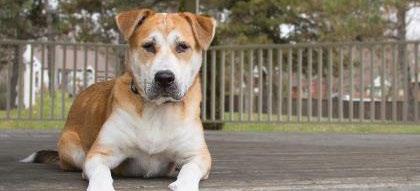
2022 GTA Giving Guide foundationmag.ca 26 2022 GTA GIVING GUIDE

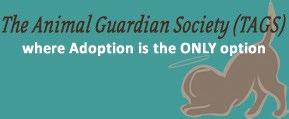

We welcome your feedback and your questions. Please feel free to contact us with any questions or comments you have. General information about our program or volunteering: tagsinfo@animalguardian.org Telephone: 905-263-TAGS (8247)
Education Unlocks Children’s Power to Achieve Their Dreams
Children in vulnerable communities in Africa, Asia and the Americas have big dreams, but they face many barriers to achieving their aspirations. Poverty, malnutrition, harmful traditions, armed conflict and gender inequality are just some of the obstacles in the way of accessing education, preventing them from reaching their full potential.
“Inside or outside of the classroom, learning is the most powerful tool children have to change their world,” says Fred Witteveen, CEO of Children Believe, an Ontario-based charity that works globally to help children help themselves through access to education. As a member of ChildFund Alliance, Children Believe is part of a global network of child-focused development organizations working to create opportunities for nearly 23-million children and their families in 70 countries.
“Education can change the trajectory of the life of a child. When children have access to education, especially quality education, it can make a real difference in helping them reach their dreams and become leaders within their own communities,” he says Mr. Witteveen.
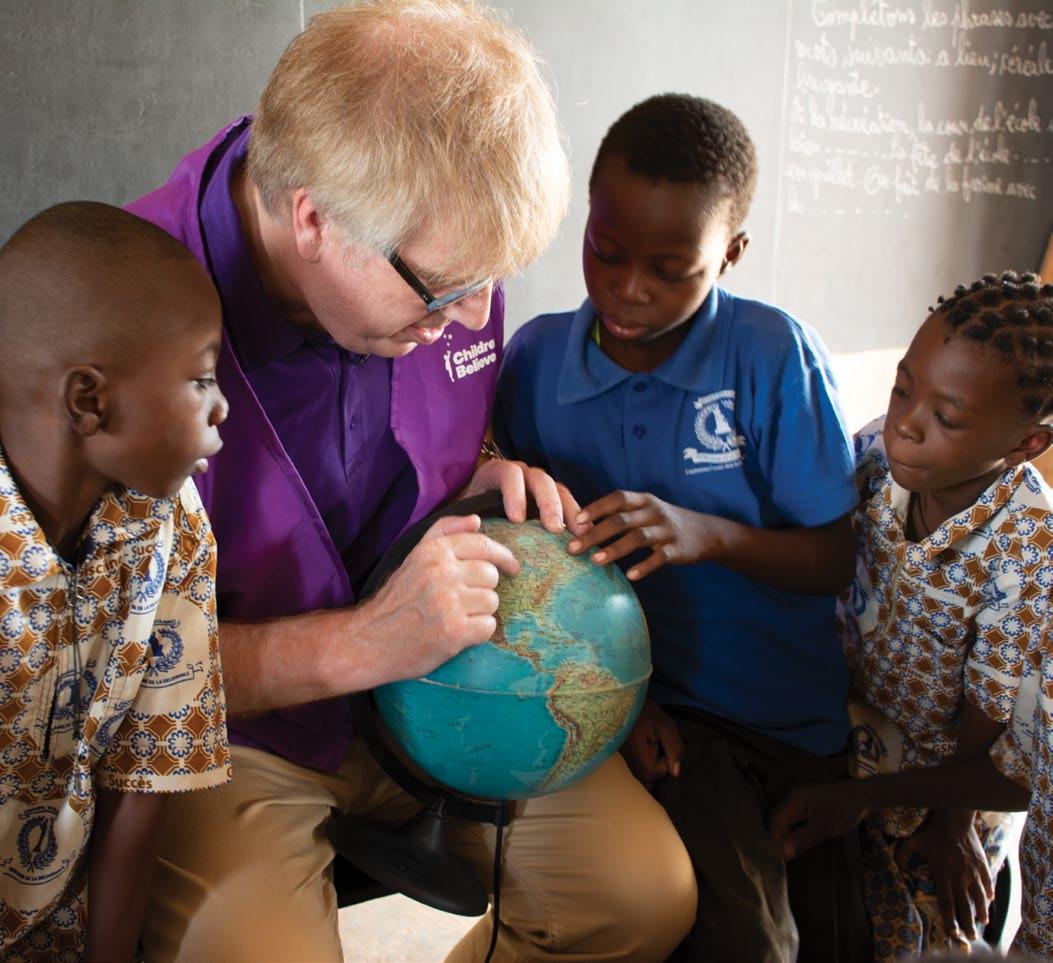
Dr. Belinda Bennet, Children Believe’s chief international programs officer, agrees.
“Girls with no education are three times more likely to marry before age 18 than girls who attend secondary school or higher,” says Dr. Bennet. “If a young girl is being forced into marriage, Children Believe works with the parents to try to ensure she stays in school,” she adds, noting there has been success in this area of their work.
In Burkina Faso, Ghana and India, Generation Global, a collaborative program of Children Believe and the Tony Blair Institute for Global Change, addresses the need for digital learning while providing a safe online space. Teens learn core dialogue skills — global communication, active listening, critical thinking, questioning and reflection — and participate in video conferences to practise these skills. The digital platform creates opportunities for them to explore and understand current global issues, such as climate change, the rights of women and girls, and action against hate speech.
While Children Believe works with communities to improve access to quality education — like building classrooms, providing training for teachers and even obtaining birth certificates for children in some countries so they can register for school — its most powerful allies are children themselves.
Children who have been educated, and go on to fulfil their dreams and get jobs that enable them to help support their families, play an important part in showcasing the value of staying in school.
Dr. Bennet shares an example in Ghana where a group of educated young people established a forum where they meet and support one another. They also act as role models in the community, pointing out the choices they could make because they have an education.
Mr. Witteveen describes a Canadian government-funded project in Nicaragua called Preventing Irregular Child Migration in Central America. As a result of improved education, and access to life and vocational skills, young people secured livelihoods in their country rather than being forced to migrate for opportunities.
He adds that the work of Children Believe wouldn’t be possible without the generous support of Canadian sponsors and donors. Learn more at childrenbelieve.ca.
Children Believe works globally to empower children to dream fearlessly, stand up for what they believe in — and be heard. For 60+ years, we’ve brought together brave young dreamers, caring supporters and partners, and unabashed idealists. Together, we’re driven by a common belief: creating access to education — inside and outside of classrooms — is the most powerful tool children can use to change their world.
2022 GTA Giving Guide foundationmag.ca 28 2022 GTA GIVING GUIDE
This article was produced by Randall Anthony Communications and originally published in the Globe and Mail on November 11, 2022, as part of the National Philanthropy Day custom content feature. Used with permission.
Children Believe CEO Fred Witteveen enjoyed meeting children sponsored by Canadians through Children Believe during his visit to Burkina Faso in May 2022.
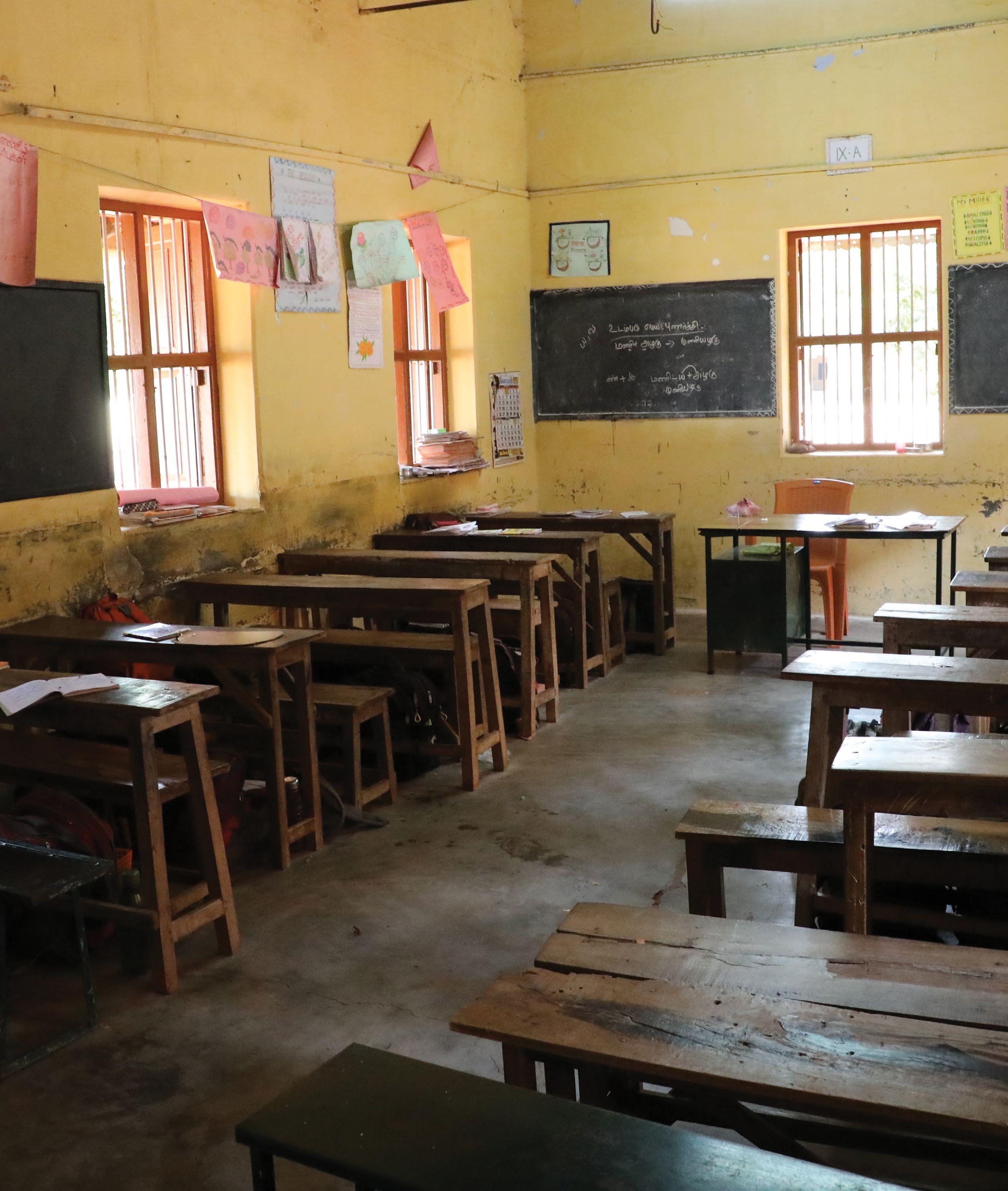






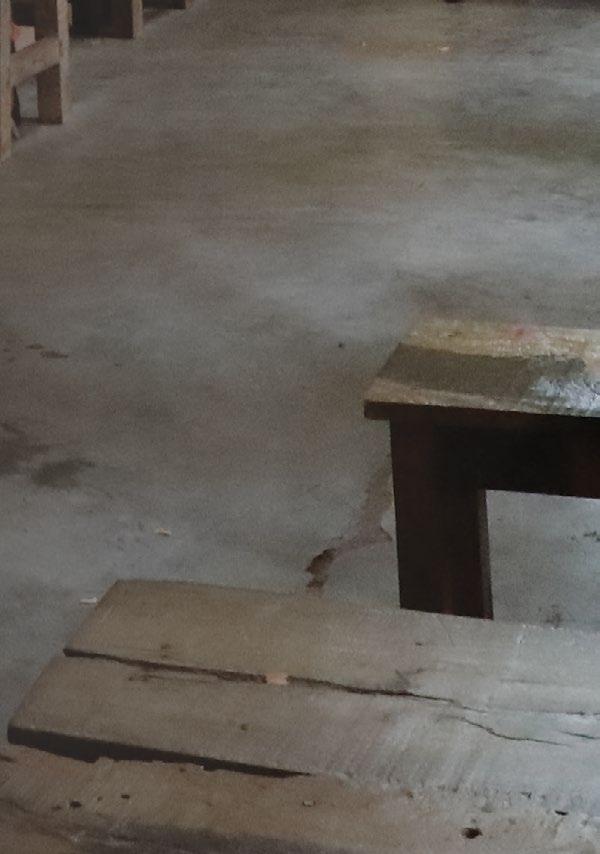




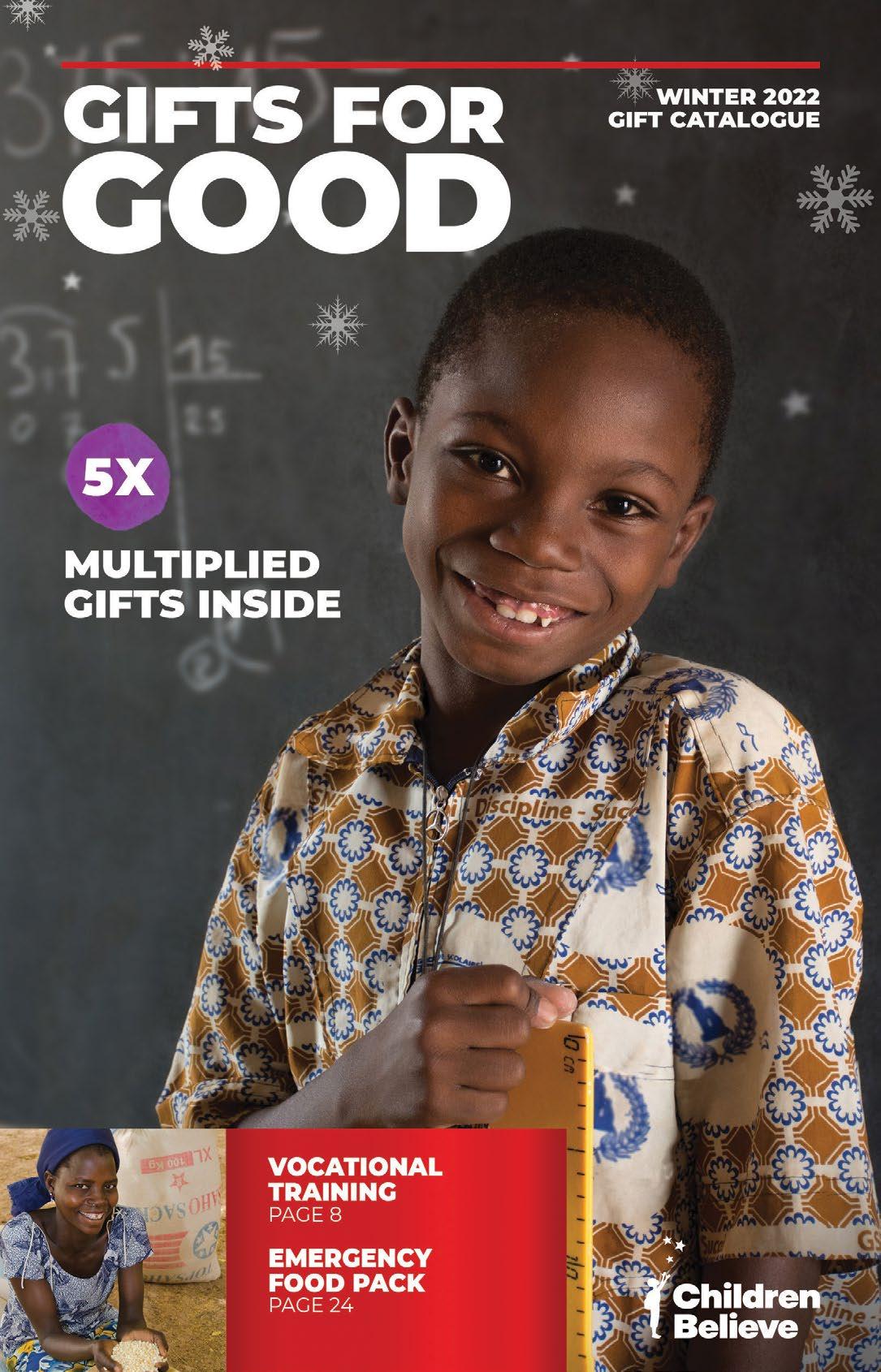













VISIT CHILDRENBELIEVE.CA > Send a girl to school — $100 > Bring Art And Music To A School — $50 > Support digital learning — $100 > A goat for a family — $100 > Help where the need is greatest — $100 STAFF PICKS: Scan the QR code to check out Gifts for Good Find inspiring gifts for your favourite people — and make a difference for children when they really need it. This holiday season give a gift that matters with Gifts for Good Charitable Registration Number: 10691 8543 RR0001
TRANSFORMING CHURCH PROPERTIES FOR COMMUNITY IMPACT

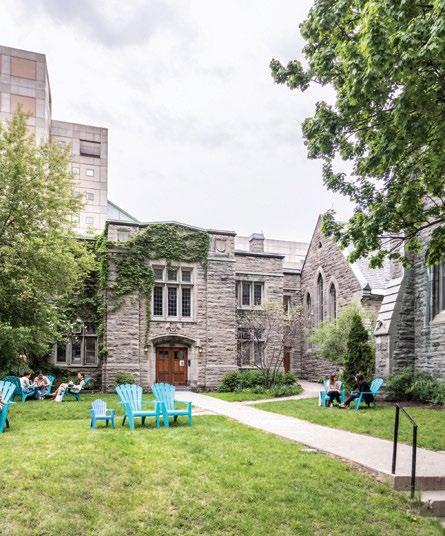

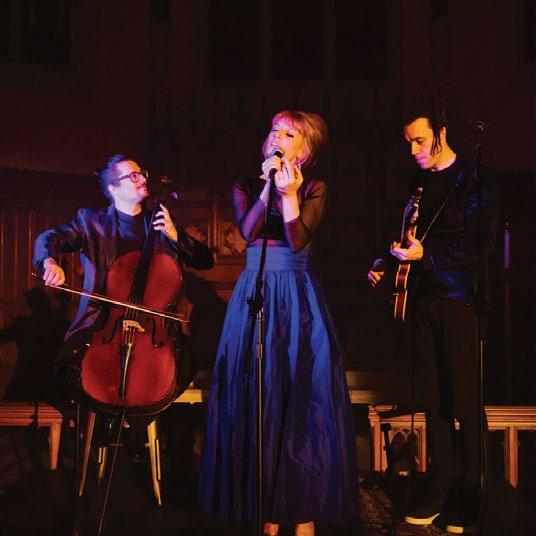
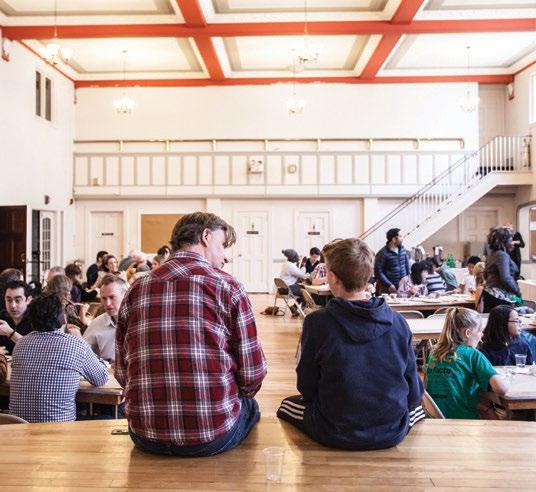
PRESERVING, RESTORING AND REPURPOSING

Over the next 10 years, it is estimated that one-third of Canada’s church buildings will close, leaving an enormous gap in urban, suburban, and rural communities already
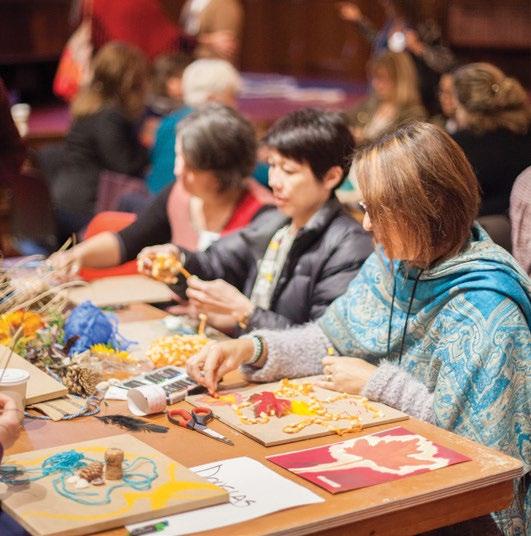


community organizations to operate. Trinity Centres Foundation (TCF) was established in 2018 as a panCanadian charitable organization with the goal of lovingly preserving, restoring, and repurposing underutilized churches into inclusive, sustainable, and multi-functional community hubs.
By applying a new social impact model focused on rent that faith properties can continue to generate community impact by supporting those that are most in need, host invaluable community gathering spaces and creating the hands of the community.
for a more sustainable and just society.
In short, we help create business plans that renovate, repurpose and re-structure these sites, for the measurable social impact of less than market rate rents for charities.

HOW WILL YOUR FUNDS BE USED
Your donations and investment will support transforming underutilize faith properties into work of transforming these buildings requires the range of practice areas. From architects to community engagement specialists, these projects are highly capital intensive, and not all groups have the ability to pay for the work that is required. Contributions from individuals like yourself will help to subsidize the costs for those groups that are most in need of the organizations that are unable to access funds from traditional lenders.
FUND
OPERATE
We assemble teams of architects, urban planners, specialists to focus site by site in our hallmark ‘Art of the Possible’ feasibility process. Our objective is to help create new governance models aimed at putting these re-purposed properties into the hands of Black, Indigenous, LGBTQ2S+ and other local charitable organizations who in turn measurably advance the United Nation Social Development Goals, advocating
To donate the work of Trinity Centres Foundation or property, email us at info@trinitycentres.org or visit the donation page of our website at trinitycentres.org/en/donate
VISION & PURPOSE
• To transform 100 faith properties across the country for community impact
• To support Black and Indigenous reconciliation through the transformation of faith properties
• To create more liveable and accessible communities in cities across the country
• To galvanize private capital towards the development of social purpose real estate through the use of social
REVIEW OUR CASE STUDIES FROM AROUND CANADA AT TRINITYCENTRES.ORG/EN/PROJECTS
work with foundations and communities
We
We operate a shared services model
assemble projects
by city
ASSEMBLE We
city

TRANSFORMING CHURCH PROPERTIES FOR COMMUNITY IMPACT YOUR GIFT We invite you to consider a gift or investment towards our goal of seeing 100 projects transformed, changing the paradigm for how these heritage places help build our villages, towns and cities! INVEST Interested in directing your investment dollars towards the construction or redevelopment of a community hub? Contact us at info@trinitycentres.org to learn more about the unique opportunities we are creating to generate a social and financial return with your support. Trinity Centres Foundation is a Registered Charity in Canada #753340314RC0001 | Quebec NEQ # 1173822942 DONATE $1,000 helps a congregation pay for a discovery meeting to reimagine their property. $5,000 helps an organization discover key local stakeholders that will make their project possible $10,000 helps subsidize the feasibility study work for a group of local charities who may be overwhelmed by the breadth of pre-development work required. AS SEEN IN... Learn more info@trinitycentres.org TRINITYCENTRES.ORG
Welcome to Second Chance
fulfill both functions. Thereafter, Second Chance’s activities were confined to domestic animals and, presently, principally cats. Second Chance’s commitment to help homeless and needy cats continues. Currently, SCWS is home about to 180 cats. (Available for adoption!)

Strong Advocates
As a no-kill shelter, Second Chance is a true sanctuary. It is a strong advocate for the spaying and neutering of cats and dogs – all cats available for adoption from Second Chance have been, or are required to be, spayed or neutered, vaccinated and microchipped. SCWS participates in PetSmart’s animal adoption program via the adoption center at PetSmart’s Pickering location.
SCWS does not receive government funding of any kind and relies on private donations to continue operating. Run by volunteers and employing a small number of part-time staff, its administrative costs are minimal, ensuring that donations go straight to the bottom line, i.e., housing, feeding, spaying/ neutering and medicating the feline residents. Feeding such a large number of cats is a very important part of our operation. SCWS is very grateful to Science Diet who gives us vital support in this area via their shelter support program.
Current and Ongoing Needs
The Sanctuary always has an ongoing need for items, new or used, to care for the animals and facilities and would be grateful for the generous donations of funds and sponsorship of all types and varieties to help fund their acquisition. We are also grateful for direct donations of these necessary items. Contact us for our current wish lists.
Second Chance Wildlife Sanctuary (SCWS) is an animal sanctuary, located in North Pickering, founded in 1996 by Joyce Smith. Second Chance is situated on a farm property owned by Club Link Corporation. Second Chance gratefully acknowledges Club Link Corporation for the continuing support. One of Joyce’s unfulfilled goals, which is shared by the present board, members and volunteers, was to raise enough funds to purchase a piece of property to ensure that SCWS will always continue its mission to help needy animals.
Until 2004, Second Chance operated as both a wildlife rehabilitation center and shelter for domestic animals. Circa 2004, changes to the rules and regulations of the Ministry of Natural Resources made it impossible for Second Chance to
Fundraising Events
An annual fundraising event organized by George Healey, together with Second Chance volunteers, is held at Vandemeer Nursery (Lakeridge Road and Bayly Street) in Ajax, Ontario. There are many people attending who dressed up in costumes appropriate to the Victorian period. The event includes a light lunch, afternoon tea, psychic readings, vendors, silent auction and raffle as well as a bake sale. If you can sponsor or organize these kinds of fundraising events, we would be happy to speak with you. Our corporate sponsors include ClubLink, The Miller Group, Hill’s Science Diet Pet Food and Hamlet Roofing.
2022 GTA Giving Guide foundationmag.ca 32 2022 GTA GIVING GUIDE
To Donate Visit Us online at www.second-chance.ws/ Donations can be also made payable to “Second Chance Wildlife Sanctuary”, and can be mailed to: Second Chance Animal Sanctuary, 2060 Concession Rd. #7, Pickering, ON L1Y 1A2
URGENT - CAN YOU HELP?
Sources of funding continues to be a pressing issue for Second Chance.
Donations by businesses and charitable foundations are always very much needed and are the lifeblood of keeping our doors open. Costs for veterinary fees runs into many thousands of dollars annually. As well, there are ongoing expenditures such as food, bedding, medication and bills for the utilities required to run the Sanctuary.
While financial support is an absolute necessity, donations of supplies and your time as a volunteer are other valuable contributions. Organizing events in which your corporate teams or your foundation members participate are also ways we can help you to help us.
There are many ways any business, foundation or individual can help Second Chance, whether your gift be one of money, property or time.
NEW! Memorial Donations
It is now possible to make a memorial donation to honour the memory of your beloved animal, a friend, a member of the family or someone who was an animal lover. Second Chance will notify the deceased’s family, if applicable, and will also provide a tax receipt. All memorial donations will be used by Second Chance Wildlife Sanctuary to care for rescued animals.
Secure online donations can be made by any of these options:
• Make a Donation using Paypal, A safe, easy way to pay online
• Make a Donation through CanadaHelps.org!
• Donations can be also made payable to "Second Chance Wildlife Sanctuary", and can be mailed to:
Another excellent way of helping the animals is to fill in a pre-authorized monthly donation plan agreement. You can have it set up to donate any amount on a day of each month that is convenient to you.
Second Chance
Animal Sanctuary
905-649-8282.
Second Chance Animal Sanctuary 2060 Concession Rd. #7, Pickering, ON, L1Y 1A2
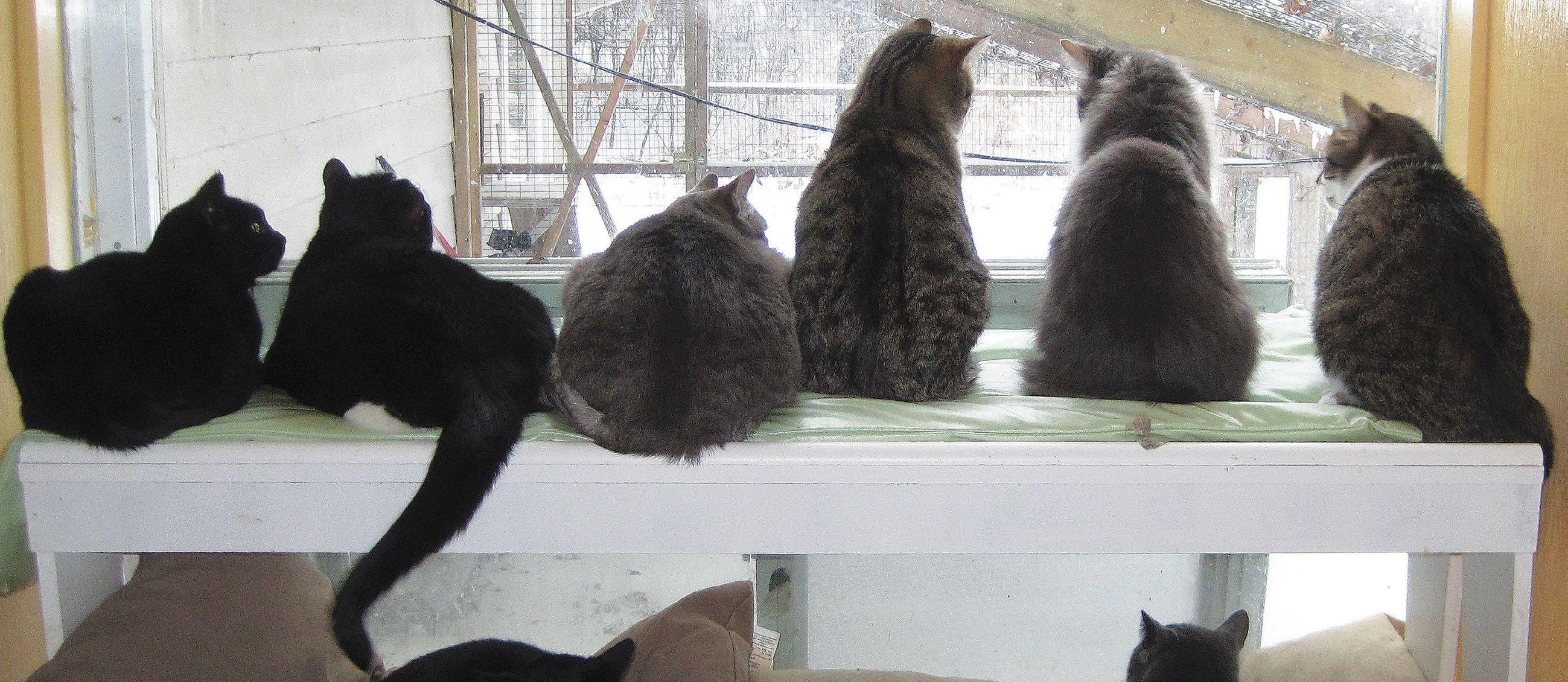
Second Chance is a registered charity, and that monetary donations are tax deductible. Charitable registration # 890180 847 RR0001
905-649-8282.
For further information regarding corporate, foundation and individual donations, please call
Interest in volunteering with the Sanctuary? Call
Please check our Wish List for donations of materials.
Durham Children’s Aid Foundation
Established in 2004, the Durham Children’s Aid Foundation (DCAF) is a registered charity supporting children, youth and families associated with the Durham Children’s Aid Society.
The Durham Children’s Aid Foundation (DCAF) extends a helping hand to children, youth and families living in vulnerable situations. As a result, DCAF is striving to break the cycle of abuse and neglect. At the same time, we ensure fostering the healthy development of children and youth into socially responsible adults.
Programs and activities supported by DCAF provide funding for essential services. Keeping in mind, these services and support are not covered by government funding. DCAF focuses on assistance for children and youth living in economically disadvantaged and vulnerable family situations.

By supporting the Durham Children’s Aid Foundation (DCAF) you can help turn hope into reality, challenge into triumph and adversity into
opportunity for over 4,000 children, youth and their families.
There are many ways you can help to make a profound impact and change the life of a child. Your gift will help to ensure that No Child Shall Be Left Behind.
The Society
With over a hundred years of service and with an everchanging environment we continually review our practices to ensure that we are responsive to our Community’s needs.
Durham Children’s Aid Society is responsible for providing child protection services to children under the age of 18 and their families who live in Durham.
We are mandated by, and receive funding from the Ontario Ministry of Children, Community and Social Services for the following services: ❯ Investigating allegations of child abuse and neglect ❯ Protecting children and youth when they are at risk of harm from a caregiver
Covering basic living costs for children and youth in our care Providing for the daily needs of children and youth in our care Placing children for adoption
To provide the best service possible to children, youth and families we serve, we are continually assessing our programs and services to ensure that we are responsive to their needs. If we see a need, we will do everything we can to help. This is why we have introduced these programs to augment our mandated services.
Indigenous Services
Adoption
Family Support Program
Foster / Kinship Care
High Risk Infant Nurse Program
On-Site Health Clinic
Prenatal Support Program
Our Vision:
Every child or youth, regardless of circumstances, has the resources and support to reach their full potential.
Our Mission:
Durham Children’s Aid Foundation (DCAF) is committed to collaborating with the community to enable equal opportunities for children, youth, and families, so that they may reach their full potential.
2022 GTA Giving Guide foundationmag.ca 34 2022 GTA GIVING GUIDE
www.durhamcaf.ca/ways-to-support/donate/ Dennis Ullman, Executive Director, dennis.ullman@durhamcaf.ca Durham Children's Aid Foundation, 1320 Airport Blvd, Oshawa ON L1J 0C6 Phone: 905.433.1551 ext. 2379 | Email: inquiry@durhamcaf.ca
❯
❯
❯
❯
❯
❯
❯
Durham Children’s Aid Foundation is committed to bringing people and financial resources together to improve the quality of life for children and youth, and to help them reach their full potential.
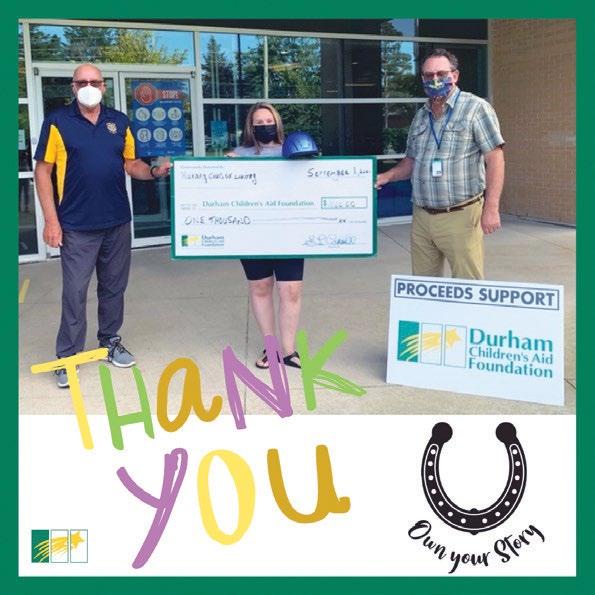

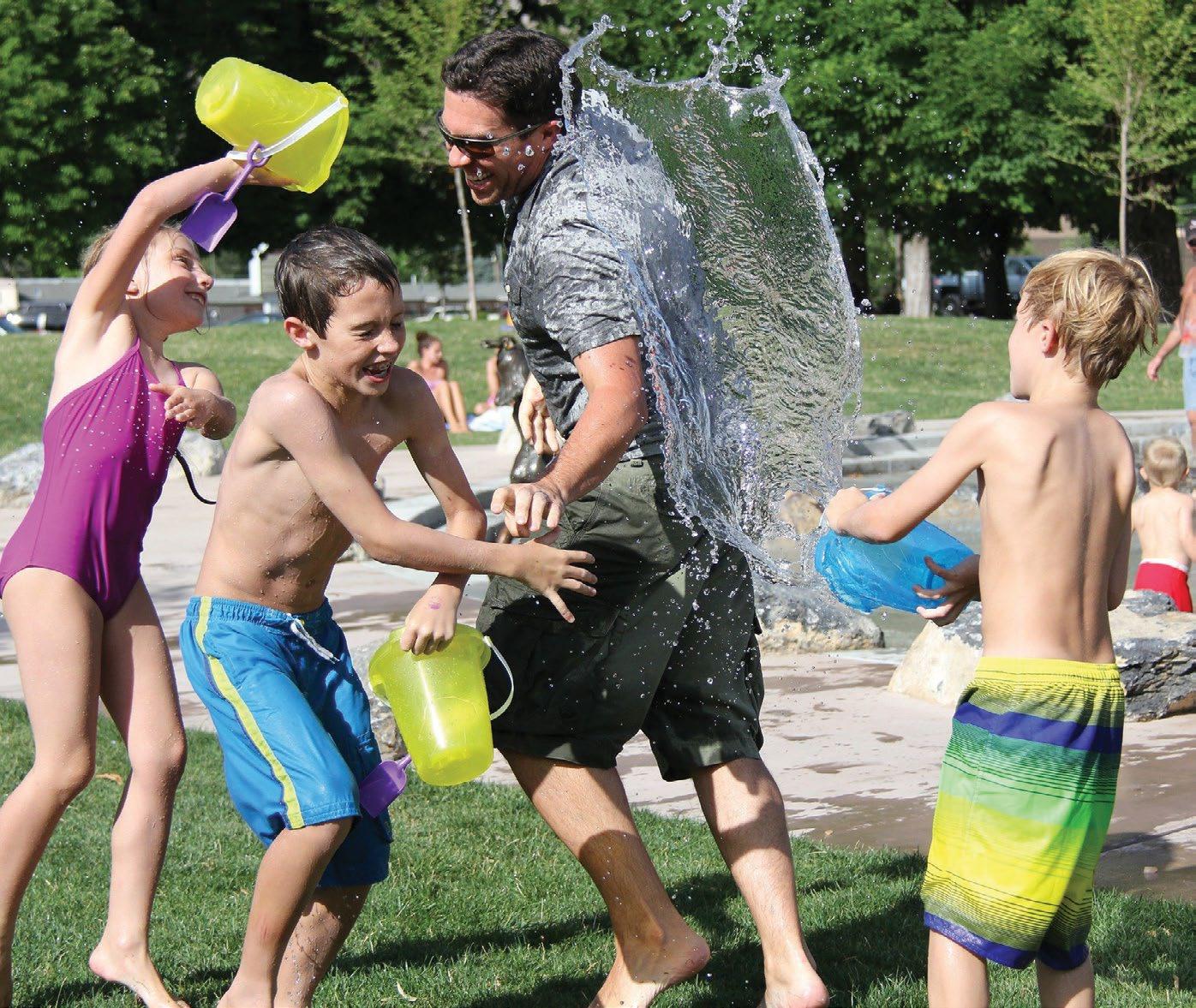

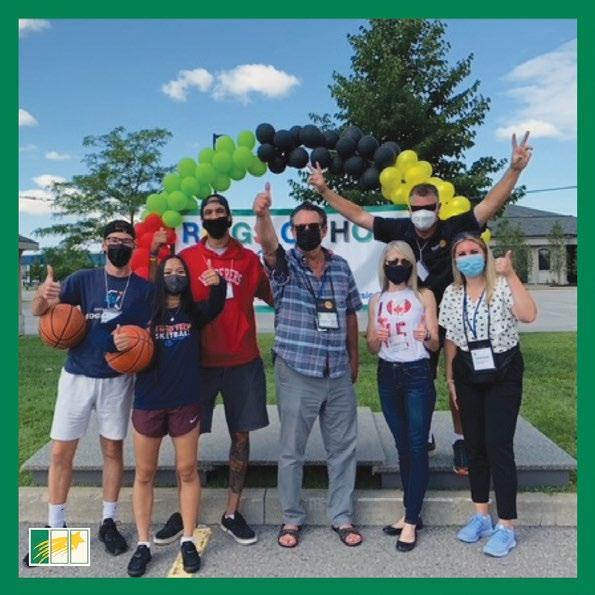
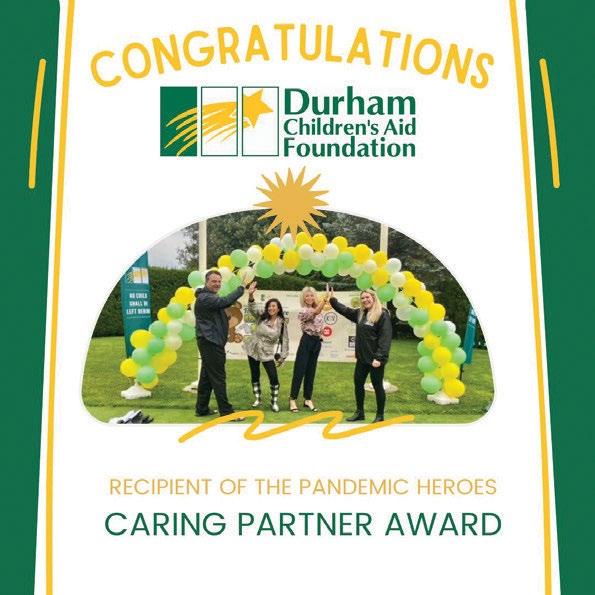
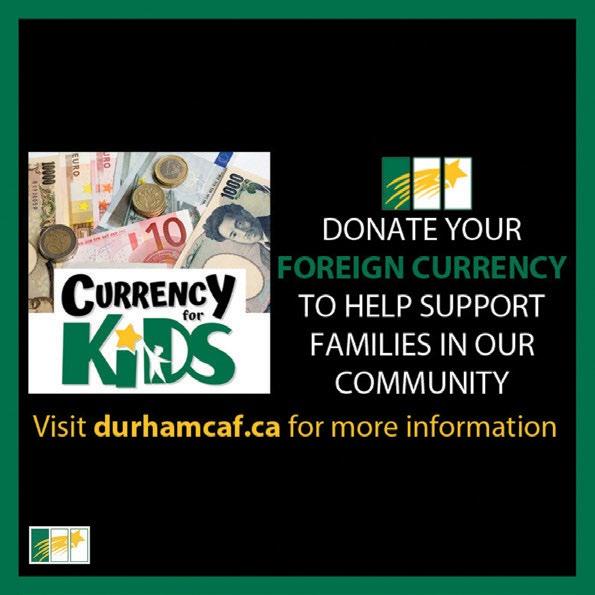
Tax-Smart Giving
DCAF hosts free Estate Planning Webinars. Tax-smart giving and Estate Planning can include Gifts of Securities, or arrange for a personal legacy for DCAF by gifting stock, an insurance policy or annuity.
Consider naming Durham Children’s Aid Foundation as a beneficiary in your Will or Trust (i.e. Bequest).

Planning ahead can assist you by increasing the level of tax protection within your financial or estate planning.
Please contact Dennis Ullman, Executive Director at 905.433.1551, Ext 2379 to further discuss a Tax Smart savings strategy that is most beneficial for you.
*
*
*
* Urgent
*
*
*
*
Holiday Hope
Positive Transitions for Youth
Bursary Program
and Critical Care Fund
Mental Health & Wellness
Recreation, Enrichment and Skills Development
Camps for Kids
Stories of Hope
SCAN to DONATE
Ontario Turtle Conservation Centre
Ontario Turtle Conservation Centre (home of Kawartha Turtle Trauma Centre) protects and conserves Ontario’s native turtles and the habitat in which they live. We accomplish this by operating a turtle hospital that treats, rehabilitates, and releases injured turtles, by performing extensive research in the field to further conservation initiatives, and by running a comprehensive education and outreach program.
Turtle Rehabilitation and Conservation – Locally and Globally
Globally, turtles are among the world’s most endangered vertebrates. There are more than 300 species worldwide, and shockingly about half of these are threatened with extinction. The causes of population decline are common to all areas:
• Habitat loss and fragmentation
• Road Mortality
• Poaching for the pet and food trades
• Boating mortalities and fishing by catch
• Predation of eggs by predators inadvertently supported by human populations (such as raccoons).
Canada holds 25 percent of the world’s wetlands but we have already lost 70 percent of them over the last century. Often turtles are the biggest biomass in these wetland ecosystems.
Our mission is: Protect and Conserve Ontario’s Native Turtles and their Habitat

We treat, rehabilitate, and release injured turtles but we also perform extensive research on conservation initiatives. We offer a comprehensive education and outreach program. And we increase awareness of the challenges facing Ontario’s turtles to inspire individuals to act to help.
This hospital is one of the few wildlife hospitals Accredited by the College of Veterinarians of Ontario (CVO). Seven of the eight species of Ontario’s turtles are now listed as species at risk provincially, and eight of eight federally. Injuries to turtles from automobiles, boats, fish hooks, dogs, and humans, are second only to habitat destruction, as a cause for many of the species’ decline.
Under the leadership of Executive Director Dr. Sue Carstairs, Medical Director for the Turtle Hospital is OTCC is supported by a province-wide network of veterinarians, private clinics and other wildlife centres which help get injured or sick turtles immediate care while transport is being arranged to OTCC. Most turtles are transported by a Volunteer Turtle Taxi force of more than 800 drivers.
Field Work at the OTCC
The Ontario Turtle Conservation Centre has been conducting field work since 2012, as yet another arm to our conservation programming. Now, our main project is a long-term study to follow a group of ‘headstarted’ juvenile Blanding’s turtles alongside a group of comparable wild-hatched juvenile Blanding’s. This study is made possible by a grant from the Species at Risk Stewardship Fund, as well as the Echo Foundation and Helen McRae Peacock Foundation.
Outreach & Education
Education is a key to conservation. One person CAN make a difference, whatever their age. After all, OTCC started due to the efforts of a few children who took action. Our education program continues to grow, fostering awareness and direct conservation action to protect our at-risk turtle populations and their wetland habitats. Fully 100 percent of participants in our programs say they were inspired to take conservation action, including helping to move turtles from danger so they aren’t injured in the first place.
Hatchling Program
Our hatchling program came about as a natural extension of the hospital. Since half the admitted turtles are females and many are carrying eggs, we wanted to make sure that these eggs were not lost. The turtles take a long time to recover, and so are not able to be released in time to continue laying their eggs in the wild. As a result, we collect the eggs (we actually induce them the same way that humans are induced!), Incubate, and hatch them at the centre. This allows these babies to be released back into the mother’s wetland. We collect approximately 3-5000 eggs per year. Approximately 65 percent hatch successfully, and are either released the same season, or kept over winter and released in the spring.
2022 GTA Giving Guide foundationmag.ca 36 2022 GTA GIVING GUIDE To Donate Visit Us at www.ontarioturtle.ca OTCC | 1434 Chemong Rd #4, Peterborough, ON K9J 6X2 | P 705-741-5000
Ontario Turtle Conservation Centre is ready to grow!

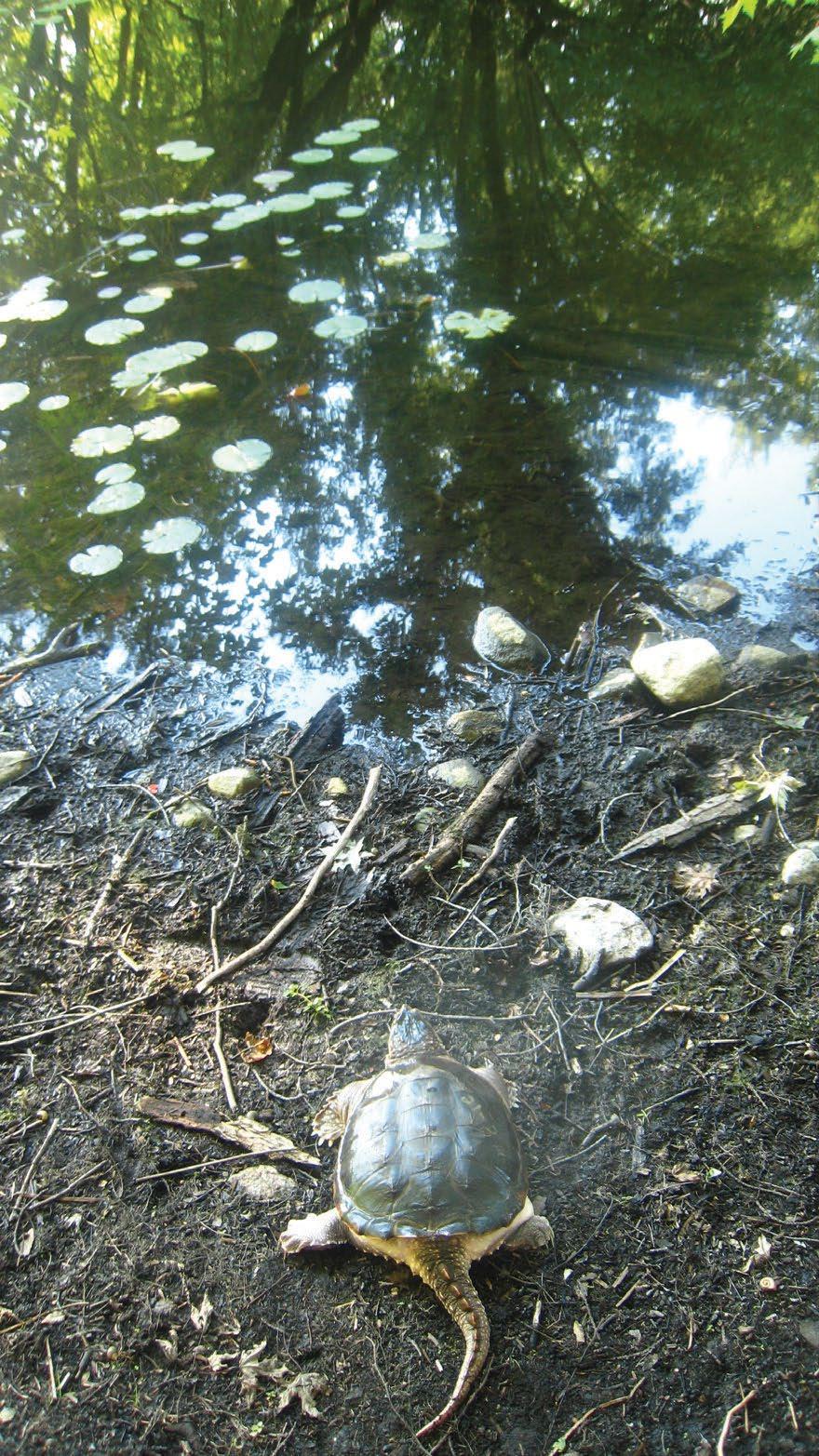

Ontario Turtle Conservation Centre (OTCC) is a registered charity which relies on public donations to aid in the conservation of Ontario's native turtles.
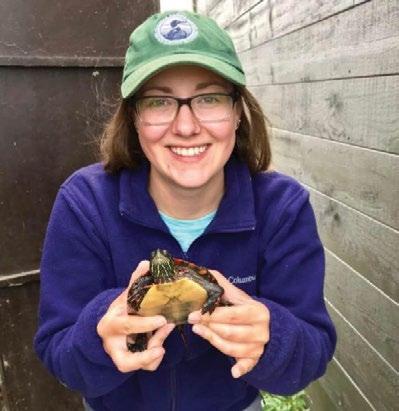
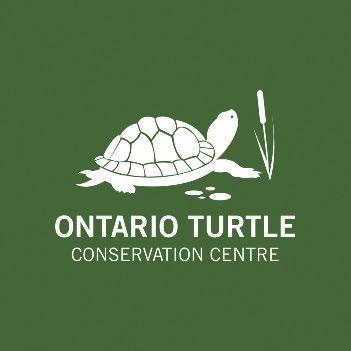

A unique facility - the only CVO (College of Veterinarians of Ontario) accredited wild turtle hospital, in Canada.
All 8 of Ontario's turtle species are considered ‘at-risk’ federally.
OTCC carries out a multi-pronged approach to conservation via operation of a turtle hospital for injured or ill turtles from across Canada (approximately 1500 admitted from across Ontario each year), a hatchling program (via eggs retrieved from injured females - incubates about 5,000 per season), field studies to show that the turtles are surviving and thriving in the wild post-release, and a comprehensive education program for all demographics.
We are in the process of planning a move to a new 10,000 sq. ft. purposebuilt facility, which would enable more public engagement. We envision it being a tourist destination.
Where Community and Conservation Connect
Registered Charity # 85752 4409 RR0001
705 741 5000 • www.ontarioturtle.ca
Leaving a Legacy & Helping Animals in Need

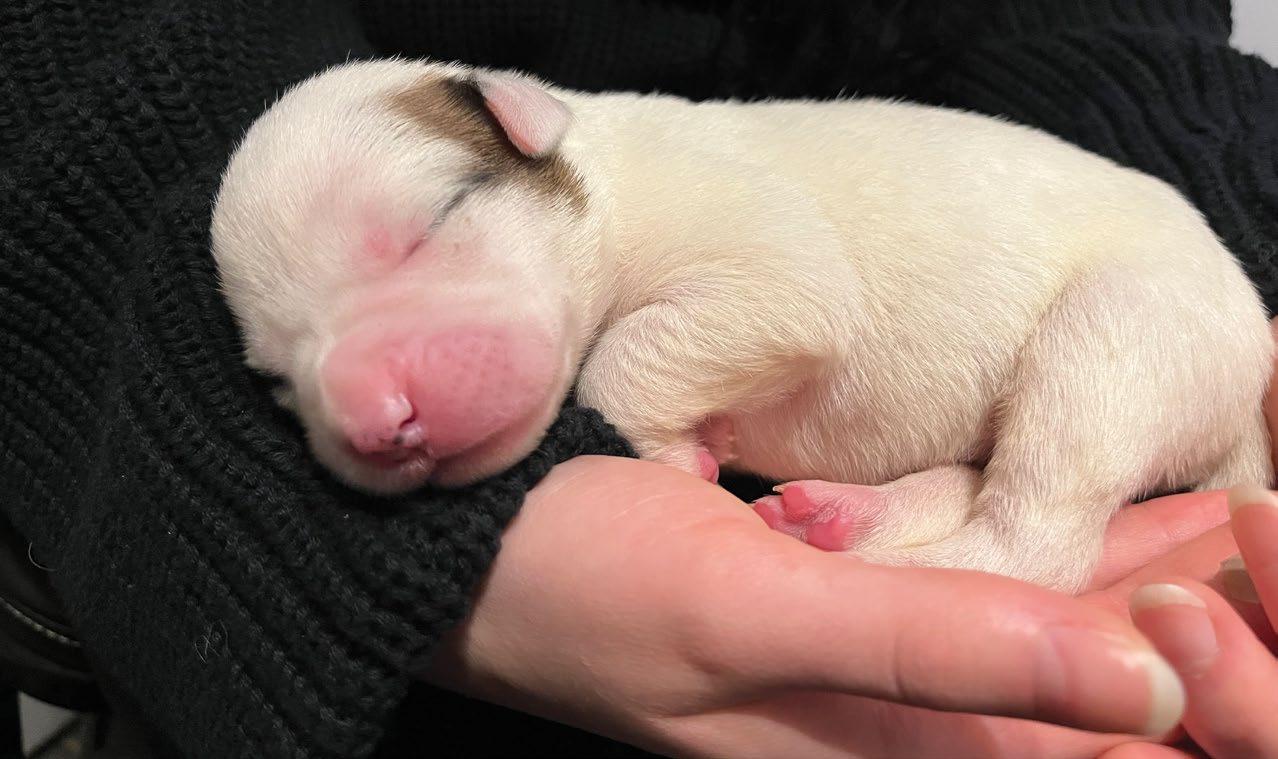
Making a legacy gift can be as simple as one sentence in your Will. This one sentence instructs your Executor/Trustee to donate one or more of your assets to your favourite charitable organization. Legacy gifts are wonderful opportunities for supporters to make a truly extraordinary impact! Anyone — of any age — who would like to make a difference can arrange to make a gift in their Will. It is great for those who need cash flow today and wish to retain their assets during their lifetime. Gifts come in all sizes. Any amount is a thoughtful and generous way to change animals lives and build a more humane community. Make a difference today so that you can be there to care for the animals tomorrow. Please contact us for full details.



Hamilton Burlington RSPCA 245 Dartnall Road, Hamilton, Ontario L8W 3V9 | 905-574-7722 www.hbspca.com | development@hbspca.com
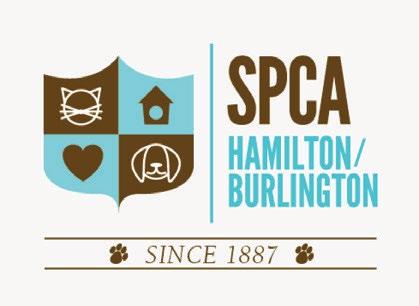
www.hbspca.com development@hbspca.com

2022 GTA Giving Guide foundationmag.ca 38 2022 GTA GIVING GUIDE
How do you want to be remembered?
LEGACY THAT MAKES A DIFFERENCE With a planned gift in your Will, you can help us continue our mission to help protect, rescue, and find forever homes for pets who need us.
are many ways your gift can be designated to match your wishes and support animal welfare. CONTACT US TODAY
574 7722
LEAVING A
There
245 Dartnall Road Hamilton, Ontario L8W 3V9 905
How Will You Leave Your Mark on the Community You Called Home?
JJessie and Ray Harris are lifesavers to so many people.
During their lifetimes, they helped fund life-saving medical equipment and technology at the Ross. They also supported medical students through an educational bursary.
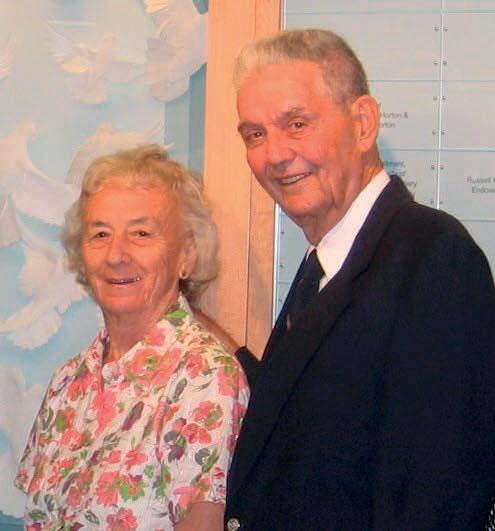
And their impact continues. Naming the Hospital in their Wills ensured that the community they loved will have access to the best care for years to come.
You can make a lasting impact on patient care with a legacy gift. The Ross is the heart of the community and ensures exceptional care for our residents, seasonal residents and regional patients. By naming the Ross Memorial Hospital Foundation in your Will, you join generations of caring people in creating a legacy that supports the entire community.

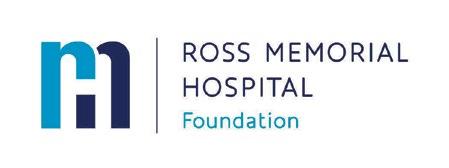
We are honoured to be considered in your legacy plans and are here to answer your questions. Let’s talk about the role you want to play in advancing health care for people in the Kawartha Lakes. What will your legacy be?
CAN THE NEXT GENERATION OF PATIENTS
The Riverwood Conservancy
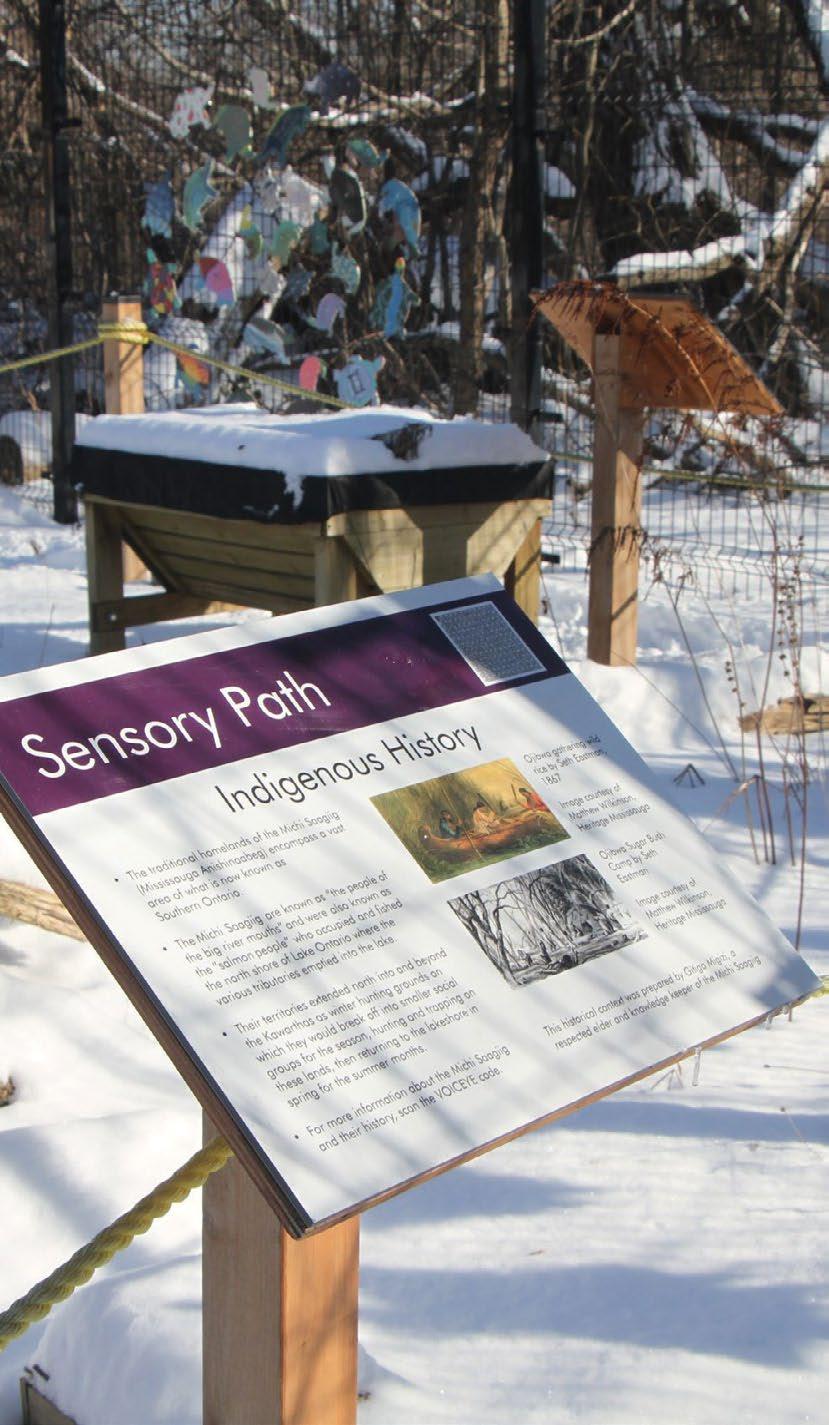

The Riverwood Conservancy (TRC) is a volunteer and member-based charity that provides programs and services focused on environmental education, conservation, gardening, and horticulture. Founded in 1985 as the Mississauga Garden Council, today The Riverwood Conservancy works with like-minded groups and individuals to enable people of all cultures, ages, and abilities to respectfully connect with nature and learn about the importance of protecting and experiencing the beauty of Riverwood. Our Vision: A community that lives in harmony with nature. Our Mission: The Riverwood Conservancy is the charity that provides programs and direction for Riverwood, a 150-acre urban nature preserve situated on the shores of the Credit River in Mississauga, Ontario. Our mission is to enable people of all cultures, ages, and abilities to respectfully connect with nature and learn about the importance of protecting, conserving and restoring natural spaces for the well-being of future generations while also experiencing the beauty of Riverwood’s gardens.
With the support of donors and members of the business community and the local volunteer and education community, our work will continue to strengthen the connection between youth and nature. Please visit our website to learn more about the history, activities and programs offered at our centre.
Spending time in nature is essential for a child’s well being and development. But access to natural spaces can be limited for low-income, diverse and marginalized communities.
The Riverwood Conservancy’s Education Naturally program offers accessible nature connections for children and youth in Peel, helping to break down barriers and ensure nature is accessible for all members in our community.
foundationmag.ca 39 2022 GTA Giving Guide
|
|
Erin Coons, CFRE, CEO, RMH Foundation 705-328-6113
ecoons@rmh.org
www.rmh.org/foundation
705 328 6146 foundation@rmh.org www.rmh.org/foundation
2022 GTA GIVING GUIDE Chappell House, 4300 Riverwood Park Lane, Mississauga, ON, L5C 2S7 905-279-5878 | www.theriverwoodconservancy.org/donate/
JESSIE & RAY HARRIS LOVED THEIR COMMUNITY IN THE KAWARTHA LAKES.
SO THEY INCLUDED ROSS MEMORIAL HOSPITAL IN THEIR WILLS.
WE
Learn more and donate at theriverwoodconservancy.org/natureforkids Registered Charity No: BN889418034RR0001
Did you know that untreated hearing loss can lead to social isolation, loneliness and reduced quality of life? But hearing loss need not have a negative impact on an individual’s health or mental well-being!

Canadian Hearing Services (CHS) has been helping persons with Deafness and hearing loss for over 80 years, and can provide much needed support for persons in this situation. Take the story of Phyllis. Before contacting CHS, Phyllis had been struggling to cope with her hearing loss. “I tried to get assistance through other means in the past, but was unsuccessful, which left me feeling defeated, stressed, and thinking that hearing loss was something I just had to live with”, said Phyllis. Through CHS she worked with a Hearing Care Counsellor, who helped her find ways to manage stress, taught her how to respond to challenging listening situations and practiced new communication strategies with her, until Phyllis felt confident communicating with others. With counselling support from CHS, Phyllis is now better able to cope with her hearing loss and has turned what seemed like insurmountable obstacles into opportunities, leading to improved quality of life and well-being for her.
Your generosity as a donor will keep our counselling services strong and help people like Phyllis stay connected with their family and community, ensuring brighter days ahead.
The PrimRose Donkey Sanctuary

We are dedicated to the rescue, protection, and rehabilitation of abused, neglected and unwanted donkeys, mules and hinnies. We also provide an information hoof-way to educate the public: a donkey is NOT a stubborn, dumb or viscous animal: but a stoic, loyal and very intelligent animal who will risk its life to protect its charges including humans. Thanks for visiting and donations are always very much appreciated!
We are open for curbside visits Thursdays and Sundays 1-3pm. There will be volunteers there to tell you about our amazing animals and the sanctuary. You don't need to schedule a curbside visit, just show up!

Donations are gratefully accepted at the front gate donation box. If you'd like a tax receipt mailed to you, please leave your monetary donation in an envelope with your name and address. Have a look at the donkey ears on the fence for a reminder of social distancing.
We also offer personal tours Thursdays and Sundays 11am12pm. Maximum of five people including children, $20 per person. Tours to be scheduled in advance with Sheila by emailing her at primrosedonkeysanctuary@gmail.com
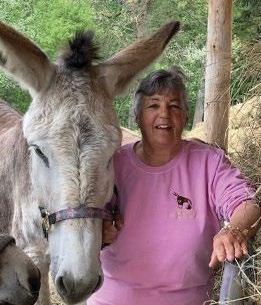
We care for our animals through donations and we thank you for your generosity.
Canadian Hearing Services is an industryleading provider of services, products and education that empower the Deaf and hard of hearing to overcome barriers to participation. Since 1940, it has continued to provide exceptional care and expertise to its clients. For more information, please contact: 1-866-518-0000 ext. 4285 • giving@chs.ca
Ways
2022 GTA Giving Guide foundationmag.ca 40 Brighter Days Ahead
GIVE NOW AT CHS.CA/GIVE-NOW primerosedonkeysanctuary.com/donate.htm 1296 Bowmanton Rd. RR 4 Roseneath, Ontario email: primrosedonkeysanctuary@gmail.com
Give
To make a gift, please visit chs.ca/giving 2022 GTA GIVING GUIDE
today to support a barrier-free society for Deaf and hard of hearing Canadians
to Help Sponsorship, Monthly Donations, Fundraising and Volunteering
Donkey care costs approximately $700 annually. This covers hoof care, food, vaccinations and other vet care. Donkey hugs and kisses, however, are free!
Donation for that Special Donkey: Please contact us to discuss an option that will suit you! We will match you up with the perfect new friend. Just email primrosedonkeysanctuary@gmail.com for details.
also accept funds through CanadaHelps.org
Interested in sponsoring an event to raise funds for PrimRose? Fantastic!
email Sheila at primrosedonkeysanctuary@gmail.com and we can arrange the details.
the Word: Tell your friends and family to stop by and visit our four-legged friends!
www.primrosedonkeysanctuary.com/donate.htm Sponsorship:
Monthly
We
Fundraising:
Simply
Spread
Kensington Health Foundation



We strive to give new meaning to community care. Entirely not-for-profit and community-based, we now encompass two long-term care facilities, community day services that support end-of-life care, a 10-bed hospice, the Kensington Eye Institute, a vision and research centre and clinical services that include screening and diagnostic imaging.
The Foundation funds urgent, capital and operational needs, allocating an average of $3.3M annually to Kensington Health. Our commitment to community care is at the core of the Foundation’s mission, having paid out $52M in donations and grants to Kensington and the community since 1998!
Building Space

for Moments That Matter
















Kensington Health helps our over-burdened health care system by leaving room in hospitals for urgent patient needs, particularly during COVID-19. Caring costs for those at end-of-life at Kensington Hospice are less than half of an acute care hospital bed. That’s why we are undergoing expanding to include new facilities, additional suites, more services and integration of our community day hospice program, The most comprehensive single-site hospice in downtown Toronto--and one of the largest in Canada.
Learn more about how you can help make a meaningful impact, please visit www.Kensingtonhealth.org/hospiceexpansion
340 College Street, Suite 250, Toronto, ON M5T3A9 kensingtonhealth.org/foundation | 416-964-3636
Niagara Health Foundation

We raise and steward funds to support high-quality patient care, education and research, and we fundraise exclusively for Niagara Health. We bring people across the region together for a single purpose – to help our local hospitals and their healthcare teams deliver the best possible healthcare. It is our vision that we become the charity of choice that inspires our communities to invest in extraordinary healthcare for the people of Niagara.
The philanthropic gifts from individuals, groups and corporations go directly towards:
• Purchasing essential medical equipment and cutting-edge technology for all Niagara Health sites
• Funding capital development projects, including the construction of new hospitals and upgrading facilities
• Supporting special patient care programs and scholarships and bursaries for students and staff studying medical sciences
Our values include: Passion - Inspire our people, volunteers and donors to invest in extraordinary healthcare. Excellence - A high-performing team dedicated to achieving outstanding results. Collaboration - Engage our community, Niagara Health, and staff in meaningful ways to advance a culture of philanthropy to healthcare. Innovation - Commit to highest standards in fundraising and innovative leading practices. Accountability - Be ethical, transparent and professional with our donors, volunteers and community.
To learn more or donate today, please visit our website or call our office at 905-323-3863 | www.niagarahealthfoundation.com
foundationmag.ca 41 2022 GTA Giving Guide
2022 GTA GIVING GUIDE New facilities 9 new resident suites Expanded services State-of-the-art technology Garden space Integration of community day hospice programs
Expansion
learn more please visit Kensingtonhealth.org/hospiceexpansion
Kensington Hospice
To
Make the Most of Your Donations this Year
2022 Top 10 Impact Charities
Charity Intelligence’s Top 10 Impact Charities to help Canadian donors find charities making the greatest impact.
Most charities claim that they “make a difference” in the lives of those they work with, but it is very difficult for donors to tell how much of a difference any given charity is making. Charity Intelligence’s rigorous analysis measures this difference, or the impact, charities actually make to see how each dollar we give can create the most positive change.
Over $18 billion was given to charities by Canadian donors last year and a significant portion of that is going to less effective charities. Donors often focus on the reputation of the charity or they get distracted by salaries or administrative costs when what really matters is to understand the impact charities have.
“Some charities create a lot of change with the donations given to them. Others have almost nothing to show for the money coming from donors” says Greg Thomson, Director of Research at Charity Intelligence. “Of the 300 Canadian charities we have analysed for impact, these 10 have the highest measurable demonstrated impact. Our calculations estimate this group of Top 10 Impact Charities delivers average returns of almost 7 dollars for every dollar donated, compared with overall average charity returns of only 1-2 dollars.”
The 2022 Top 10 Impact Charities cover frontline charities providing social services in Canada as well as international programs. Many of these charities bring evidence-based programs to developing countries, like clean water and education, which can produce high impact per dollar. Because of this, six of this year’s Top 10 Impact Charities work overseas in developing countries.
To meet Canadian donors’ growing demand for impact charities, Ci also released 6 additional lists of charities with top impact: ❯ Top 10 Canadian Impact Charities:
charities with high-impact programs in Canada
❯

Top 10 International Impact Charities: Canadian charities with high-impact programs operating overseas ❯ Top 10 Impact Canadian Food Banks: Canadian food banks creating high impact
❯ Top 10 Impact Canadian Youth Charities: charities creating highimpact results for youth in Canada
❯ Top 5 Impact: Calgary Charities
❯ Top 5 Impact: Toronto Charities
These Top Impact Charities are a breed apart from the over 800 Canadian charities they report on and rate. Charity Intelligence’s overall star ratings are based on an assessment of 5 objective aspects: 1. donor reporting, 2. financial transparency, 3. funding need, 4. cents to the cause, and 5. demonstrated impact. The 5-Star rated charities based on these metrics are listed in the 2022 100 Highest Rated Charities report.
The demonstrated impact rating is different and looks at only one aspect: for every dollar you donate, what’s the measurable return to clients and society?
Rather than just heart-warming stories, impact donors feel good about proven results. Recently a charity asked, “Wouldn’t you agree that making a child smile is priceless?” CI’s answer is “no”. Impact
SECTOR
donors always consider opportunity costs. Money is a scarce resource. If comparing two charities where one charity saves lives for $100,000 each and a second charity saves lives for $20,000 each, impact donors will support the second charity that creates five times the impact per dollar. Five lives saved compared with one life saved for the same donation. Impact donors give for the highest change created from their donations.
Some call Charity Intelligence a “charity watchdog”. They see themselves as research analysts who help Canadian donors give better. They hold charities to account for the generous support they receive from Canadian donors and expect them to be financially transparent, and they call out exorbitant overhead costs or charities that don’t need more funding. Similarly, each giving season we also call out the best impact charities we’ve found. Charity Intelligence’s reports are independent and objective – charities do not pay for ratings or listing on their website.
ABOUT CHARITY INTELLIGENCE:
42 foundationmag.ca 2022 GTA Giving Guide RESEARCH
Charity Intelligence researches Canadian charities for donors. Charity Intelligence’s reports and ratings help Canadians give confidently. With greater confidence, people say they gave 32 percent more money. Charity Intelligence reviews and rates over 800 Canadian charities and provides in-depth reports on philanthropic sectors like Canada’s environment, cancer research, and homelessness.
CHARITY LOCATION
Against Malaria Foundation Canada Montreal, QC International – Health Canadian Foodgrains Bank Winnipeg, MB International – Food The Citizens’ Foundation Oakville, ON International – Education Effect Hope Markham, ON International – Health Fresh Start Recovery Calgary, AB Addiction Recovery Indspire Ohsweken, ON First Nations – Education Lifewater Canada Thunder Bay, ON International – Water Moisson Mauricie Trois-Rivières, QC Food Bank Operation Eyesight Universal Calgary, AB International – Health Partners in Mission Food Bank Kingston, ON Food Bank
VECTEEZY.COM
Reach marketers & nancial executives

















































































































































Our magazines are must-reads for key executives in core corporate competencies.






















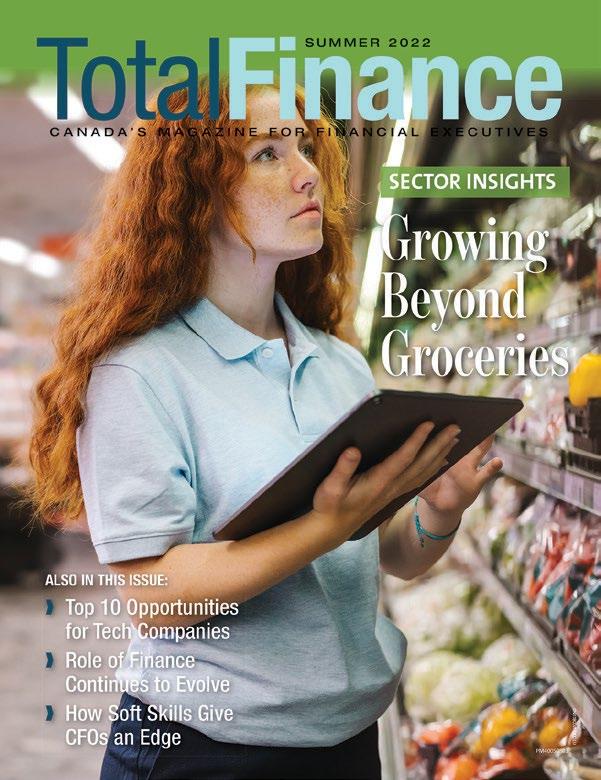

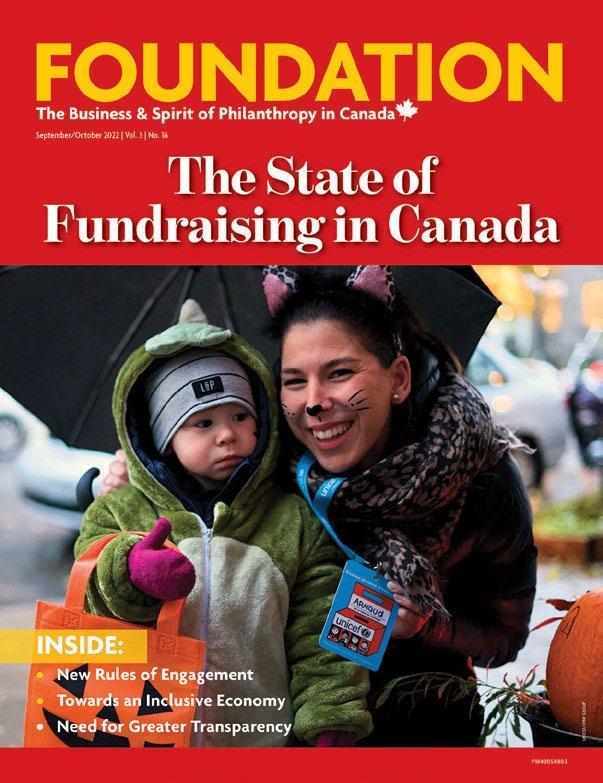
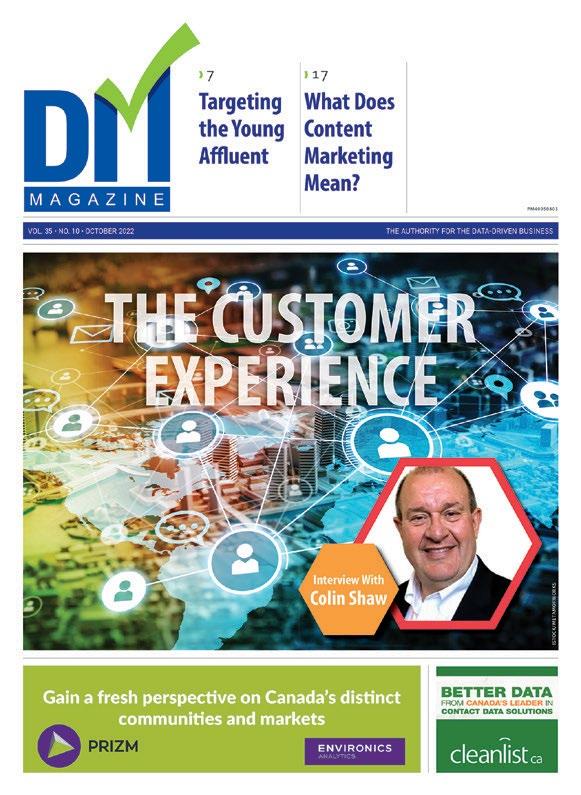

Can you help our readers:


• Create a strong financial structure and healthy economic ecosystem to ensure capital and cash flow keep their engines running?
• Determine who their customers should be, how they can reach them most effectively, and how they can turn data-driven marketing into profitable sales?
• Build efficient and effective financial systems to enhance payments and billings between their companies and their customers and vendors?
• Convert all the data and information they collect from every contact point into tangible benefits that increase revenue and reduce costs?
• Equip their companies with the tools, technology, systems and hardware needed to manage their operations, to create new services or products, and deliver them to their market?
• Manage their customers with smoothly functioning support departments that are properly staffed and equipped to solve problems, foster loyalty and retain customers?
• Make any or every step in that chain better, faster, cheaper, and more profitable?
To advertise or get more information and media kits: Steve Lloyd 905-201-6600 ext 225 | 1-800-668-1838 | steve.lloyd@lloydmedia.ca
We can help you tap into the
at the points that will drive your campaigns.
ecosystem
Visit our websites: DM Magazine, www.dmn.ca Foundation magazine,
www.foundationmag.ca Total Finance magazine, www.totalfinance.ca
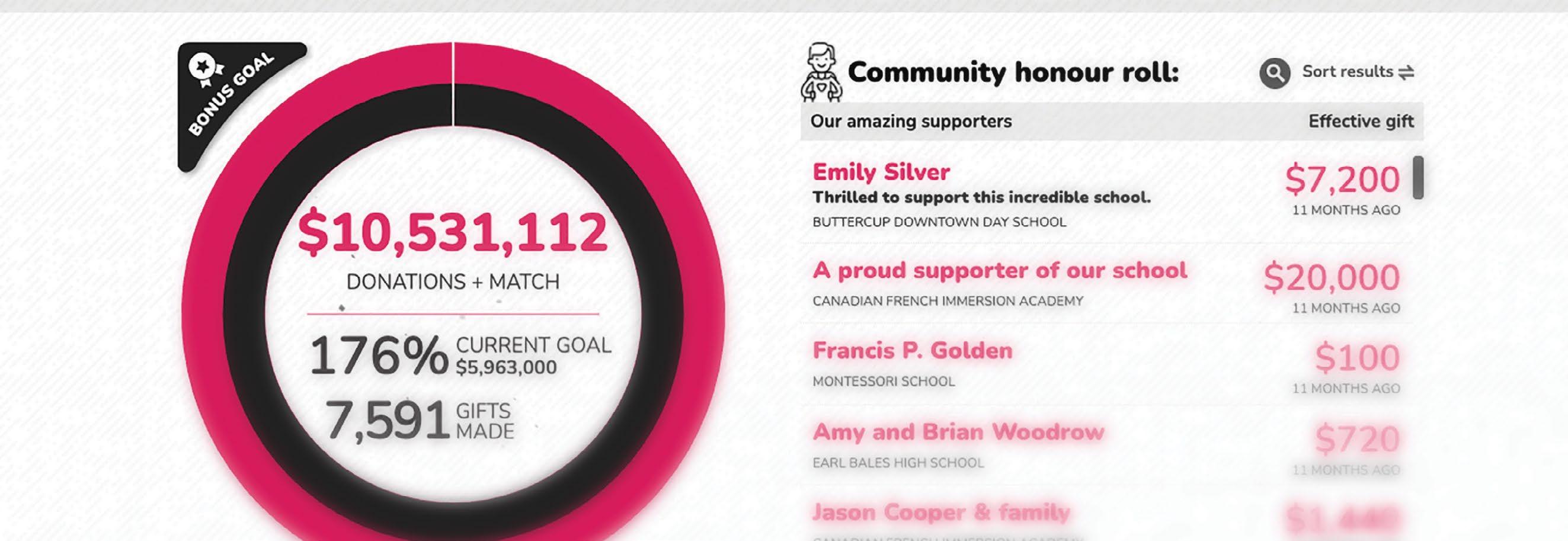











































 BY CYNTHIA ARMOUR, CFRE
BY CYNTHIA ARMOUR, CFRE





 BY SARAH CHAMBERLIN
BY SARAH CHAMBERLIN






















































































































































































































































